Translations 677
The CIA and hatred in the social networks

The CIA and hatred as a weapon in social networks
No one who, in the networks, opposes the patterns defended by their paymasters, escapes the fury of the salaried haters. For this purpose, the CIA’s cash register has no limits, nor does the low morality and the dastardly ethics of its mercenaries.
Author: Raúl Antonio Capote | internacionales@granma.cu
May 4, 2021 23:05:02 PM
Translated and edited by Walter Lippmann for CubaNews.
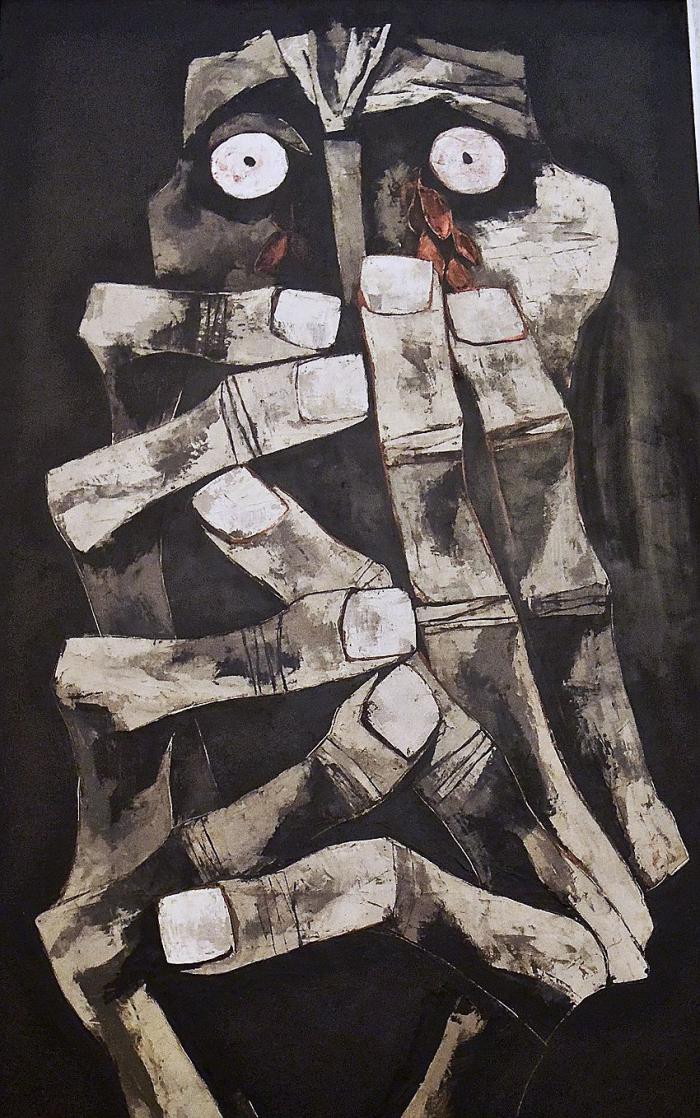 The Political Action Group (GAP), which is part of the Special Activities Center, a division of the U.S. Central Intelligence Agency (CIA), carries out, among other missions, analyses based on Big Data, processes profiles of subjects of interest and draws up action plans that are sent to the Internet Task Force, in charge of executing them.
The Political Action Group (GAP), which is part of the Special Activities Center, a division of the U.S. Central Intelligence Agency (CIA), carries out, among other missions, analyses based on Big Data, processes profiles of subjects of interest and draws up action plans that are sent to the Internet Task Force, in charge of executing them.
Through Big Data, information is obtained that can be used for subversive work, it allows to better organize the forces to mobilize them in the fulfillment of a certain objective and, above all, through the micro-segmentation of the public, they manage, in a particular and specific way, the concerns of each neighborhood, of each family, of each person.
Enemy analysts can build models capable of predicting hidden attributes, including political preferences, sexual orientation, how much you trust the people you relate to, how strong those relationships are, all thanks to the information that users themselves upload to the networks.
In February 2018, following orientations of former President Donald Trump, the so-called Internet Task Force for Cuba or Internet Task Force for Subversion in Cuba was created, subordinated to the gap, which is the same as the CIA.
It is in charge of hiring the so-called netcenters, who execute the campaigns against Cuba, through the recruitment of specialists who, in turn, gather around them dozens of cyber-sicarii. They also have the mission of coordinating the actions of counterrevolutionary platforms and media, and of searching for collaborators on the island, among other tasks.
In cyberspace there is also a sordid specimen, feared by many, the hater. The term, imported from English, refers to those people who are dedicated to harass others through social networks.
They use their victims’ physical characteristics, sexual orientation, race, ideology or religion to carry out their harassment. They use the pain, fears and insecurities of those who take their claims seriously.
Some act out of fun, resentment or envy, but there are others who are true mercenaries, people hired to conduct smear campaigns or character assassinations. That is why they are called cybersicarii.
Character, civic or reputational assassination, as it is also named in the psychological warfare manuals of several intelligence agencies and organizations in the world, is part of the methods used by the US special services to destroy the adversaries of the empire.
The cyber-assassassin seeks to make the person subjected to the aggression feel helpless, think that he is not in control of the situation, wear himself out in useless defenses, become exhausted and try to isolate himself, to get as far away as possible from his harassers. The purpose is to make the victim try to justify herself publicly, and self-censure, which does not necessarily put an end to the attack, and may even intensify it.
They use repeated sending of offensive and insulting messages, highly intimidating, to a given individual, including threats of harm that make the person fear for their own safety; circulate rumors about someone, to break their reputation; manipulate digital materials, photos, recorded conversations, emails, steal passwords to impersonate identity; circulate fake news and cruel “gossip” about their victims; perform economic blackmail… Nothing, no matter how dehumanizing, stops the cia’s hired hands.
When multiple harassers participate in the act of cyberbullying, the action is called mobbing, and is part of the strategy against Cuban Internet users, especially public figures. Hundreds of trolls, digital hitmen, cyber-mercenaries, all trained and paid by the CIA, participate in the attacks, which are perfectly planned and scripted in the U.S. psychological warfare laboratories working for the Task Force.
Revolutionary leaders, journalists, artists, musicians, personalities from different areas of the social, cultural and political life of the country have been subjected to intense attacks of this type.
No one who, in the networks, opposes the bosses who defend their paymasters, escapes the fury of the salaried haters. To this end, the CIA’s cash register has no limits, nor does the low morals and dastardly ethics of its mercenaries.
The CIA and hatred as a weapon

The CIA and hatred as a weapon in the social networks
No one who, in the networks, opposes the patterns defended by their paymasters, escapes the fury of the salaried haters. For this purpose, the CIA’s cash register has no limits, nor does the low morality and the dastardly ethics of its mercenaries.
Author: Raúl Antonio Capote | internacionales@granma.cu
May 4, 2021 23:05:02 PM
Translated and edited by Walter Lippmann for CubaNews.
 The Political Action Group (GAP), which is part of the Special Activities Center, a division of the U.S. Central Intelligence Agency (CIA), carries out, among other missions, analyses based on Big Data, processes profiles of subjects of interest and draws up action plans that are sent to the Internet Task Force, in charge of executing them.
The Political Action Group (GAP), which is part of the Special Activities Center, a division of the U.S. Central Intelligence Agency (CIA), carries out, among other missions, analyses based on Big Data, processes profiles of subjects of interest and draws up action plans that are sent to the Internet Task Force, in charge of executing them.
Through Big Data, information is obtained that can be used for subversive work, it allows them to better organize the forces to mobilize them in the fulfillment of a certain objective. Above all, through the micro-segmentation of the public, they manage, in a particular and specific way, the concerns of each neighborhood, of each family, of each person.
Enemy analysts can build models capable of predicting hidden attributes, including political preferences, sexual orientation, how much you trust the people you relate to, how strong those relationships are, all thanks to the information that users themselves upload to the networks.
In February 2018, following orientations of former President Donald Trump, the so-called Internet Task Force for Cuba or Internet Task Force for Subversion in Cuba was created, subordinated to the gap, which is the same as the CIA.
It is in charge of hiring the so-called netcenters, who execute the campaigns against Cuba, through the recruitment of specialists who, in turn, gather around them dozens of cyber-criminals. They also have the mission of coordinating the actions of counterrevolutionary platforms and media, and of searching for collaborators on the island, among other tasks.
In cyberspace, there is also a sordid specimen, feared by many, the hater. The term, imported from English, refers to those people who are dedicated to harass others through social networks.
They use their victims’ physical characteristics, sexual orientation, race, ideology or religion to carry out their harassment. They use the pain, fear and insecurities of those who take their claims seriously.
Some act out of fun, resentment or envy, but there are others who are true mercenaries, people hired to conduct smear campaigns or character assassinations. That is why they are called cybercriminals.
Character, civic or reputational assassination, as it is also named in the psychological warfare manuals of several intelligence agencies and organizations in the world, is part of the methods used by the US special services to destroy the adversaries of the empire.
The cyber-assassassin seeks to make the person subjected to the aggression feel helpless, think that they are not in control of the situation, wear themselves out in useless defenses, become exhausted and try to isolate themselves, to get as far away as possible from their harassers. The purpose is to make the victim try to justify themselves publicly, and self-censure, which does not necessarily put an end to the attack, and may even intensify it.
They use repeated sending of offensive and insulting messages, highly intimidating, to a given individual, including threats of harm that make the person fear for their own safety; circulate rumors about someone, to break their reputation; manipulate digital materials, photos, recorded conversations, emails, steal passwords to impersonate identity; circulate fake news and cruel “gossip” about their victims; perform economic blackmail… Nothing, no matter how dehumanizing, stops the CIA’s hired hands.
When multiple harassers participate in the act of cyberbullying, the action is called mobbing, and is part of the strategy against Cuban Internet users, especially public figures. Hundreds of trolls, digital hitmen, cyber-mercenaries, all trained and paid by the CIA, participate in the attacks, which are perfectly planned and scripted in the U.S. psychological warfare laboratories working for the Task Force.
Revolutionary leaders, journalists, artists, musicians, personalities from different areas of the social, cultural and political life of the country have been subjected to intense attacks of this type.
No one who, in the networks, opposes the bosses who defend their paymasters, escapes the fury of the salaried haters. To this end, the CIA’s cash register has no limits, nor does the low morals and dastardly ethics of its mercenaries.
Virtudes’ Rolling Kitchen

Virtudes’ Rolling Kitchen
Parque Central Hotel installs modern food truck in the very heart of Old Havana
By Dariel Pradas
April 3, 2021
Translated and edited by Walter Lippmann for CubaNews

Text and photos: DARIEL PRADAS
Many people are already talking about the news -and also the dishes- of a food truck next to the Parque Central Hotel, on Virtudes Street, in the municipality of Old Havana.
Every day, from 10:00 a.m. to 4:00 p.m., a truck with the best retro style of the 1940s parks at that address. Its menu of chicken, pork, hamburgers and other fast-food variants attracts a clientele that, without queue or matazón [slaughter?], comes to taste the culinary standards deduced from the Iberostar chain and its five-star plus “inn”.
The offer also provides a free home delivery service and, although some people find its price onerous in general, others find it economical in comparison with gastronomic businesses in the self-employed sector.
A food truck is basically a vehicle capable of offering any type of menu in streets, squares, fairs and, in essence, open places: a sort of mobile kitchen.
In recent years, this practice has become so popular around the world that filming TV programs in such trucks, complete with chefs, aprons and gourmet terminations, has become commonplace.
It is said that the food truck on Virtudes Street is the first of its kind in Cuba; however, Jose Luis Ayala, deputy general manager of the Parque Central Hotel, says that the Melia Habana inaugurated one before, only that it focused on cocktails, not food. The Comodoro and Cohiba hotels also have similar vehicles.
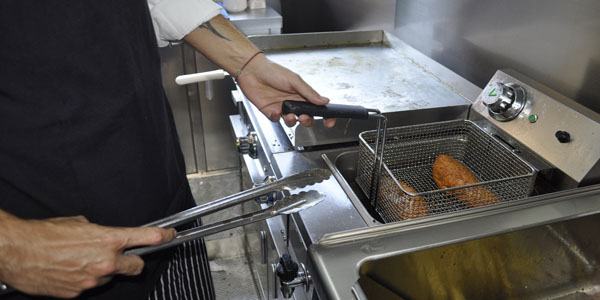
The food truck menu at the Parque Central hotel consists mainly of fast food offerings.
In the 1980s, Ayala says, trucks with the same purpose of the food truck used to appear at several Havana events, but without the specialization and technologies of their current relatives: with their griddles, fryers, microwaves, scrubbers, their own electric plants, water recycling systems, policies that establish the exclusive use of biodegradable materials…
“It’s not just selling food for the sake of selling, but doing so with an image that identifies the hotel, is attractive and complies with the relevant ecological standards,” argues the assistant manager.
Sales in pesos are also important
The idea of the food truck in Cuba came from the then president of Cubanacán, Yamily Aldama, now deputy minister of Tourism. The goal was, according to Ayala, “to boost domestic sales, and then, to bring the hotel product closer to the towns and places where the summer events took place.”
In 2019, summer fairs began to be organized with the participation of hotel gastronomy. Parque Central repeated these experiences in Virtudes Street, La Piragua and other locations.
“We saw that it was a business opportunity, with a sustainable income, and that the service was recognized by customers, both by residents and local tourists who were passing through the city,” says the deputy director, who discussed a thesis in 1991 on the influence of Cuban food on tourism.
To perform this service in outdoor areas, most of the time tents were rented. A food truck would be, for its ease of movement and aesthetic appeal, a much more viable option. Once the investment was approved by the joint venture Amanecer Holding S.A., the owner of Parque Central (Iberostar is the administrator), the truck was imported and arrived in Cuba at the height of covid-19, at the end of 2020.
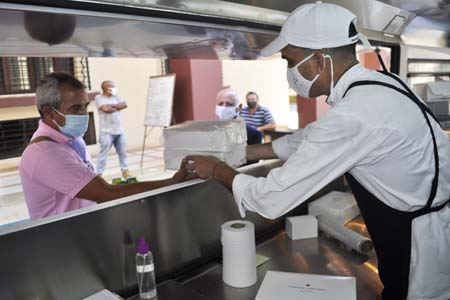
The food truck service complies with established sanitary protocols to counteract the spread of the coronavirus.
“The level of tourism has dropped a lot. It was very good for us to have this type of service, because right now, in the stage we are in of the pandemic, we can’t have that influx of foreign tourists,” Ayala admits. “So, we link the offer with the local market segment. As for prices, we can’t say they are cheap, nor very high. We did a study and looked for a balance between the quality of the offer and the price: something that the customer would accept.”
Although the food truck is by far not the hotel’s main business, “it helps to cover the salary expenses we have to pay to keep the hotel open. In addition, we link a large part of the hotel’s workers to the truck”.
Yoinys Pérez, sous chef at Parque Central, thinks that the food truck concept is a very good idea: “We are happy, above all, because we have work. With this we were able to incorporate workers who were at home, at 60 percent (earning that proportion of their usual salary)”.
With his 13 years of experience at the hotel, this specialist found it a little hard to adapt to the small dimensions of the truck, with the heat of the fryer close and constant.
“Sometimes I miss my old kitchen. It’s not the same to prepare a dish to order, where we have a restaurant that is five forks, with all kinds of dishes, products, finishes, sauces… they are dishes that take another kind of treatment,” he sighs suddenly.
“You miss… you miss that adrenaline. On the go, it comes out! Everything by time: starter, main course, dessert. It’s another kind of service, in which the client enjoys the hotel more and the chef innovates and feels more fulfilled.”
Nevertheless, Yoinys has come to appreciate his work in the food truck. For example, he enjoys pleasing local customers, who have a different palate than the foreign tourists he usually serves: “It’s different, but even much better. First, because they speak our language. Second, they have the same tastes as us. It’s what I know how to eat. What my children eat.
Restaurant on wheels
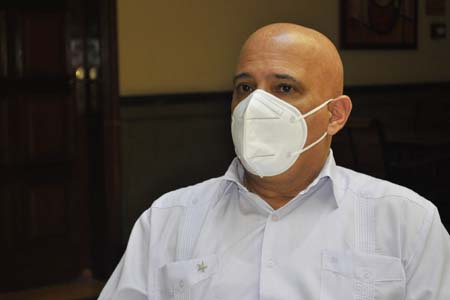
“I am a lover of gastronomy and an advocate of typical Cuban dishes,” says José Luis Ayala, assistant general manager of the Parque Central Hotel.
The food truck is here to stay. In the words of general manager Jorge Sáez Parra, “it allows you to adapt to the new reality one hundred percent. It is a service in which you are in the open air. People pass by, take it and eat it wherever they want. It is the same as Iberostar’s Covid protocols. It guarantees gastronomy in a safe way”.
Moreover, after the current pandemic crisis, such a truck will have even more repercussions, perhaps in the context of thawing, starting with fairs and concerts all over Havana.
“The essence of the food truck is to bring the offer closer to the points where there is demand for an agile service and food that does not need to be very specific, but attractive”, says the Spanish director, “It gives you flexibility: like a restaurant on wheels so that you go to where the customers are, not that the customers come to you. That’s its appeal.
Men’s things… and women’s…

Men’s things… and women’s…
Masterfully conducted by Doctor in Historical Sciences Julio César González Pagés and directed by Yolanda Cabrales, a new proposal of Cubavisión channel has already put on the table two topics that generate a range of opinions: machismo and feminism.
Author: Aracelys Bedevia

Digital |digital@juventudrebelde.cu…
March 9, 2021
Translated and edited by Walter Lippmann for CubaNews.
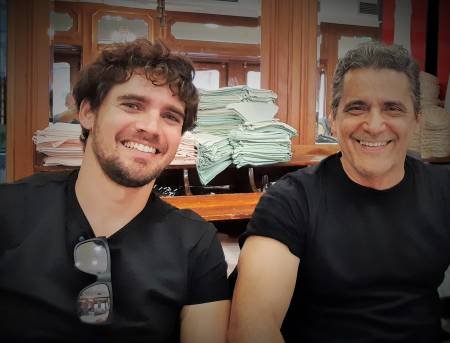
Julio César González Pagés (right) with Yonnier Angulo, who is in charge of the Men in Tangles section. Autor: Juventud Rebelde Publicado: 09/03/2021 | 09:16 pm
The enigma of femininity has made men of all times cavillers. [quibblers] —Sigmund Freud
One more step forward in the effort to build a more humane society, a victory for those of us who work and dream for a better world, represents the program Cosas de hombres [Men’s Things] which has been broadcast every Monday for the past two weeks at 10:15 p.m. on Cubavisión channel.
Masterfully conducted by Doctor in Historical Sciences Julio César González Pagés and directed by Yolanda Cabrales, the new proposal has already put on the table two topics that generate plurality of criteria: machismo and feminism. What is it? Are we or are we not?
The guests represent a wide range of professions and activities that relate male behaviors in different social spheres. Víctor Fowler (writer), Rochy Ameneiro (singer), Omar Franco (actor), David Blanco (singer), Norma Vasallo (university professor), Andrea Doimeadiós (actress) and Marilyn Solaya (filmmaker) have spoken with Pagés so far; all of them very committed to the struggle for egalitarian spaces where men and women have the same opportunities and are valued as human beings, regardless of sex.
In Men’s Things there will be, from the scientific area, research, communication and teaching, Félix Julio Alfonso, Patricia Arés, Clotilde Proveyer, Yulexis Almeida, Tania de Armas, Yonnier Angulo, Jesús Muñoz Machín, Andrei Hernández and Francisco Cruz. Alberto Roque, Lisandra Chaveco, Yohanka Rodney, Yosvel Hernández, Oni Acosta, Enmanuel George, Arlin Rodríguez and Neida Peñalver will also be present, said Julio César González Pagés to Sexo Sentido.
Edesio Alejandro, Cristian Alejandro, Maykel Blanco, Israel Rojas, Jan Cruz, Luis Franco, Jorge Luis Robaina (Karamba), Juan Carlos Rivero (Moncada), Ernesto Blanco, Adrián Berazaín and Raúl Torres will accompany the debate with music, acting and direction. The list includes Rodrigo García, Tony Ávila, Alberto Corona, Denis Ramos, Jorge Martínez, Maysel Bello, Lizette Vila, Marcos Herrera and Sebastián Milo. Representing the athletes will be multi medalist Victor Moya, in the high jump.
Dr. Pagés, leader of the Ibero-American and African Network of Masculinities (RIAM) and author of more than a dozen titles (Macho, varón, masculino and Por andar vestida de hombre, among others), says that “the idea came up in 2013 during a visit of director Yolanda Cabrales to my house.
“She had directed Ecos de mujer and wanted to create a space where men were the protagonists. In 2020 Rafael Pérez Insua, director of Cubavisión, called on us to rethink the project. With COVID-19 we had to look for alternatives. The original idea underwent changes, but gained nuances for discussion.”
-How much time will you be on screen and what other topics will you be discussing?
-We will discuss health, paternity, sexuality, violence… There will be 13 segments with a duration of 27 minutes, divided into four parts , with three guests and a section called Tangled Men, which is coordinated by Yonnier Angulo and addresses the impact of social networks on contemporary life and masculinities.
-We talk a lot about violence against women and very little about violence against men. Don’t you think that machismo is one of the reasons why this violence is invisible?
-One of the big obstacles is that women’s demands have been resisted by men who do not see them as a priority. A change of vision from hegemonic masculinities is to give them the prominent place in the effort to end inequalities in order to achieve a more equitable society.
“Revolutionary experiences have taught us that the inequalities suffered by women do not end with the end of capitalism, because there are men who are still interested in maintaining the subordination of women.
“Understanding the issue is complicated when a sector suggests that these demands can divert us from more urgent or important objectives at the national level or consider them sectoral demands, and believe that we can create the bonds of solidarity necessary to transform society without questioning male supremacy.
“More than defending men, it is about knowing [mens’] vulnerabilities and prioritizing an agenda that deconstructs the myths of [male] supremacy. We must first and foremost learn to be full humans in order to live in harmony and not be the source of so much violence and destruction.”
-Is it a good time for a program of this kind?
-Yes, it comes at an excellent time of changes in Cuban society. Laws related to our masculinities are being passed and it is important to be prepared for this. There is a great need to educate the population on the various questions related to masculinities and to offer ways to unlearn toxic macho values.
Show me your hair

Show me your hair, and I’ll tell you who you are?
The story aims to bring us closer to the life of Sarah Breedlove (who later became C.J. Walker when she remarried publicist Charles Walker and took his name for the business), the first African-American woman to achieve the status of a millionaire in the United States.
Author:

José Luis Estrada Betancourt |estrada@juventudrebelde.cu
March 8, 2021
Translated and edited by Walter Lippmann for CubaNews.
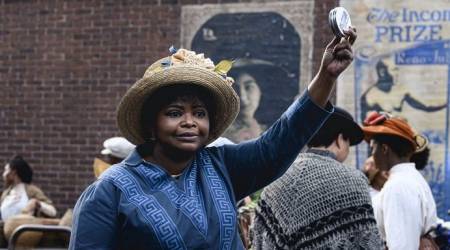
Madam C.J. Walker. Autor: MagaZinema Publicado: 08/03/2021 | 10:44 pm
I couldn’t help but think of my mother as soon as I started watching Madam C. J. Walker: Self Made: Inspired by the Life of Madam C.J. Walker, the miniseries released by Netflix in 2020 and now broadcast by Cubavisión on Saturdays at around 9:15 p.m. And not only because the extraordinary actress Octavia Spencer brings my Juana to mind, but because the story she stars in and for which she was nominated for Emmy awards, brought me back to those years of my childhood in which so many times I found the mistress of my days girdled with a hot comb to smooth her hair soaked in fat smelly grease.
It frightened me that I had to try, by fire, to make them find her beautiful, sliding that red-hot iron through the bundle of strong and unruly hair that she inherited from our ancestors, to leave them shiny and straight. I preferred to leave so as not to witness a possible accident, an alternative that did not disappear when it was the turn of the curling iron and the curl began to bend in a more permanent way with a chemical treatment that does not even spare the scalp.
I didn’t even wonder then what would be wrong with natural hair. It seemed to me the most common thing in the world that some people wanted to “advance the breed”, or that, before inquiring about their health, they were concerned with finding out how the newborn had turned out: It is evident that I was not ready to understand then that the centuries of slavery, of colonialism, imposed a Eurocentrism that later capitalism and imperialism were in charge of accentuating, to the point that this racist concept, which is so discriminatory, is so impregnated in my mind, that I was not ready to understand then that the centuries of slavery, of colonialism, imposed a Eurocentrism that later capitalism and imperialism were in charge of accentuating, to the point that this racist concept, discriminatory, is so impregnated in us (still today) that it can be common that in many spaces what does not comply with the “white beauty” is taken as dirty, unkempt, inappropriate, unprofessional, and is associated with poverty and marginality.
Undoubtedly, the theory of the existence of human races (over time up to 63 were classified, although Cuba must have surpassed that figure with so many mulattoes, mulatos blanconazos, jabaos, capirros, Indians…) was a great “invention” for those who sought to establish their social and cultural supremacy. The truth is that, although scientifically it has been destroyed, the direct derivative of this concept: racism, has not disappeared at all.
Madam C. J. Walker: A Self-Made Woman, a story that aims to bring us closer to the life of Sarah Breedlove (who later became C.J. Walker when she remarried publicist Charles Walker and took his name for her business), the first African-American woman to achieve the status of millionaire in the United States, could speak more forcefully about all of this, but does not.
However, viewers should not think that they will get to know much about this revered figure by African Americans with the four 45-minute chapters that Netflix offers us, because suddenly we will find her as a notable businesswoman and philanthropist when in a scene filmed in broad daylight, we discover her dressed in beautiful blue, as if she were dressed for an Oscar award ceremony, protecting herself from the sun, strolling outside her mansion where she will be noticed by her neighbor Rockefeller.
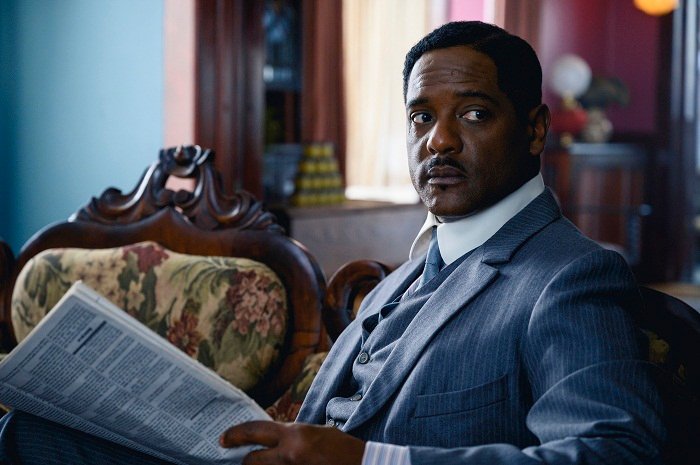
Blair Underwood as Charles Walker.
“To whom God gave it…”, those who think I’m envious are probably thinking right now. It’s just that no divine force must have given her anything, but she certainly had to fight very hard to be able to create an empire in the cosmetics industry with hair products. How did a black woman, who came into the world in 1867, on a cotton plantation in Louisiana, orphaned at the age of seven, more than poor, without any education, a domestic servant who lost her knuckles washing, manage to impose herself in a United States living in full racial segregation, in that lamentable period (1877-1950) when more than 4,400 African-Americans were victims of terrible lynchings? How was she able to achieve this, subjected to men, as women were in the early years of the 20th century, and despised for her sex and her skin?
We will not know it from the series Madam C. J. Walker... It will remain as a pending task to approach in depth the existence of this totally unknown woman (at least for me). In this production, such historical context is just a postcard in the background. Of course, we will be moved by the image of some being hanging in a tree, but the story of the protagonist played by Spencer will move along other paths.
It begins when the beautiful Addie Munroe (Carmen Ejogo), a mulatto whose white genes gave her a long and abundant mane, is shown before Sarah with the “crecepelo”, a product that will not only solve her hair loss problems, but will also give her back, above all, her self-esteem. Seeing that it works, the future tycoon, excited, will propose to her savior to let her participate in the sale, but the first one, who in a “rapture of kindness” provided it, was not willing to give that miracle to darker people with bad hair. Just what writer Alice Walker (The Color Purple) calls “colorism” to describe that other expression of “internal” racism.
You don’t have to be too imaginative to know how the script will develop in the future: Sarah and Addie, who will give her one setback after another, will become bitter enemies, although those who are familiar with Madam C. J. Walker’s biography assure that this is one of the many licenses taken by the authors of the scripts, in order to provide the ingredients that would make the melodrama move forward in the right direction.
In fact, if one is to go by the events presented to us from the novel On Her Own Ground, by A’Lelia Bundles, on which this biopic is based, Madam C. J. Walker, rather than the enormous injustices that African-Americans had to face in the early 20th century, was made more difficult by Addie (who, let’s face it, ended up stealing her invention, which she miraculously copied and obtained) and the men around her – such as Charles Walker (Blair Underwood), the husband jealous of his wife’s success; and John (J. Alphonse Nicholson), the ungrateful husband of her daughter, Leila Walker (Tiffany Haddish). She becomes betrayed, even by some of the very women to whom she gave support and work…. Nothing, the series seems to reinforce the popular saying that there is no worse wedge than the wedge of one’s own stick.
In any case, the undeniable fact is that with her efforts Madam C. J. Walker overcame poverty, humiliation, discrimination, classist and sexist prejudices… to rise as a true exponent of the American dream and to honor the title of this dramatization that was released in March, just two months before George Floyd ended up dead under the knee of ex-cop Derek Chauvin.
For me, Madam C. J. Walker: A Self-Made Woman stands out, above all, for the superb performance of Octavia Spencer (who also serves as executive producer), ever so believable, ever so convincing. Yes, Spencer is an actress of the highest caliber. She reminded us again this Sunday thanks to the film Hidden Figures, which was put on by Arte 7. We saw her, as splendid as her two other co-stars (Taraji P. Henson and Janelle Monáe), also with her hair ironed, chemically straightened or in wigs, because that’s what is generally expected of black actresses and models on TV or in the movies. As beautiful as diversity is! But it is difficult to overthrow what has been coined for so many years in the sociocultural field.
Cuba in the Third Millenium
Memoria
Electoral processes and political elites.
Cuba in the Third Millennium
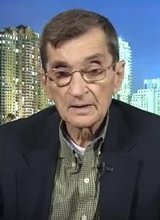 By Domingo Amuchastegui
By Domingo Amuchastegui
April 2005
Number 194
Translated and edited by Walter Lippmann for CubaNews
The regime that Fidel Castro has headed for 44 years, suggests we make a careful study of the electoral processes and political elites, as one object of study, among many other topics. A general opinion is that Cuba does not have elections or competitive elections and, consequently, lacks democracy; another – no less general and repetitive – is to understand and project an image of power in Cuba absolutely centered around the figure of Fidel Castro, with no one else who is relevant or important.
The latter point has followed a certain and more recent corollary that grants the physical presence of Fidel Castro with magical powers, conditioning what could happen later or not, in terms of regime changes, transition, succession or continuity. Consequently, the special obsessive attention that exists regarding his health status, his fainting spells, incoherence and poor functioning of other vital signs.
The present analysis proposes to study these two dimensions – elections and political elite – to, first, review, both with a critical view, summarize the most outstanding features of the four decades of the Cuban regime, that is to say, the features the author considers that marked important high points for the current projection of these two dimensions. In second place, and through a discussion of the last elections held in Cuba between October 2002 and February of 2003, to analyze the behavior of both at the dawn of the third millennium.
Antecedents
In March of 1959, speaking in a mass event in the former Presidential Palace, Fidel Castro, when referring to the holding of elections in the near future, received a resounding rejection of such an idea from the hundreds of thousands of participants. As a personal witness and participant of the event, this did not seem prepared or manipulated but an accumulated reaction on which Fidel Castro was sure of obtaining such a result. The political or legal terms of this rejection were never defined and, thus, that NO to elections announced in the public plaza served as – there are many others that go beyond this analysis that also served these ends – one of the legitimate public features of the revolutionary regime, a situation that lasted from 1959 to 1976, the date when Popular Power was implanted and formed.
From 1976 until 1992, with a constitution approved and adopted – according to official statistics – with a 100 % of the voters, general elections have been held every six years. In the first, the PCC suggested to its militants who to vote for a total of six that were in the ballots with their biographies for the information on the candidates. On the one hand, the number of candidates has been reduced to two. Regarding the inference that the PCC directed its militants for whom to cast their direct vote, was rejected for the following elections.
From 1976 until 1992, with the adoption of an approved constitution – according to official statistics – general elections have been held every six years, with almost 100 percent of voters. In the first, the PCC instructed its militants to vote for one or several candidates for a total of six of those appearing on the ballots that included the biographies of the candidates as information for the voters. On the one side, the number of nominees has been reduced to two. As for the procedure of the PCC directly indicating to its militants who to vote for, this practice was abolished for the future elections. Although the PCC does not propose or formally or publicly launch the names of the candidates, all the voters in the neighborhood assemblies of each administrative division knew that the over-whelming majority of cases, the names proposed as candidates had the blessing of the Party, although they were not necessarily militants.
What is known as the National Assembly of Popular Power (ANPP) or Cuban parliament was made up of two groups. One, designated through deliberation or ratification of the Politburo in representation of the positions or posts that the Party and Government considered important for running the country and that they should be represented in the ANPP (a little over 50 percent). These designated, generally appeared also as elected in the different administrative divisions where the majority did not necessarily live in the areas nor was it their true residence. The second group, made up of the delegates of the provincial assemblies, usually previously chosen and accepted by the provincial and national instances of the party and, as national delegates, no additional voting was necessary because they had already been voted for in their administrative division – or according to what was promoted at the time – by indirect election while the Politburo, on the one hand, and the provincial assemblies, on the other, functioned as a kind of Electoral College or Great Elector with supreme powers.
By June of 1992 and under the impact of the internal crisis that occurred after the external events of 1989-1991, among the limited reforms that were made then, was the approval of a new electoral law (Reformed Electoral Law No. 78, 20/10/92) that introduced significant variations. The most important change was that all deputies proposed for the ANPP (609 members today) had to be elected or voted for individually and by more than 50% of the votes cast. In other words, although the mechanism of designation of the candidates to represent both groups (50-50) in the National Assembly, and with the situation that both groups now had to be elected on a personal bases, ended the procedure of indirect elections and an end to the monolithic image by making the election more individual and requiring 50% of the votes. This opened up a diversity of spaces for negative or punishment votes and, around the issue, the most diverse forms of political mobilization and transmission of messages and challenges to the regime. For the latter, these threats did not go unnoticed and formed part of the foreseen risks and part of the limited reforms then taken up.
During these decades, the historical political elite – the leading nucleus and pillars of the of the insurrection and revolutionary regime after 1959 – were drying up for several reasons (repeated failures, abuse of power, repeated incapacities, corruption, bureaucratization, disproportionate intolerance, regional conflicts, personality clashes, loss of charisma and others) until reaching the reduced numbers to their minimum expression of what it is today.
However, during this process of depletion, the Cuban leadership noticed and recreated, with some success, the generational substitution, that is, the process of a systematic promotion of young persons throughout the entire structure of power and all of civilian power on which the power resides.
At this point, tendencies never before seen appeared publicly. First, the V Congress of the Young Communist Union (UJC) in 1998 and under the direction of Roberto Robaina, gave free reign to criticisms of policies and old leaders that was applauded by all: the generation responsible for so many errors, was not able to assume and solve with the necessary criticism the errors of the past. This was only possible by part of the new generation.
In a more conciliatory tone, but with the same demolishing charge of criticism, the discussion of a document appears in 1990, known as the Call of the Party to the IV Congress and whose writing and debate were promoted by the then twosome Raul Castro-Carlos Aldana. In the document there was full acknowledgement of the generational problem, although not in the critical terms of the V Congress of the UJC. Instead, it analyzed the existence of three groups of three different generations: the one that made and defended the revolution since the beginning or the historical generation; the intermediate generation that was in their 40s at the time (today bordering their 50s); and the third or younger generation from which the cadres and leading figures were gleaned – clearly, the new political elite – of a current and future substitutive group of the historical elite. This latter, with still certain exceptions, has no longer become the main source from which new figures appeared to occupy new posts or changeovers.
The exile began to be aware of these tendencies with the adequate scientific rigor during the latter decade of the 20th century, by the multidisciplinary team of the Florida International University (FIU) in its first study about the transition in Cuba. The changes in the Cuban leadership during that same decade, widely confirmed the preliminary documented analysis of the FIU team.
The team offered more proof during the second half of that same decade. In 1996, during the only military parade of the past 20 years, the Brigade General that headed it was in no way related to the historical elite, either by age, family ties or any others. We were confronting a new generation of military chiefs, a key component of the new elites. A year later, the V Congress of the PCC served to offer new proof of the tendency that confirmed a deep transformation in the composition of the political elite of the Cuban regime.
Elections
After 26 years of electoral processes, the last elections took place between October 2002 and February of 2003. The repeated objections are well-known and more than well known but, currently, the result today has continued to be the same: the voters overwhelmingly endorsed the options presented to them by the regime. Some reading and new proposals must be reflected upon to refresh this approximation and the analysis of this phenomenon. Our contribution today leads in that direction and the latest elections offer an excellent opportunity.
Let us start by saying that, after 10 years of a reformed electoral law – as described above – no political current of dissidence or internal opposition has been able to structure an effective mobilization for a negative or punishment vote; nor by the exile nor, much less, an agreement between both forces. There can be differences in interpretation but the fact is one: this has not been achieved; no one can coherently propose it and for almost all it seems unimportant.
The Cuban regime is interested in the electoral process as restructured because it has an important instrument of internal and external legitimization. It has amply exhibited and divulged the figures obtained because they developed a crushing support thanks to the many mechanisms used to promote almost total assistance to the ballot boxes. But let us not forget the following: what happens in the voting stations where the voter use their rights, ballot in hand, without any control has not become, until now, a recourse of unrest, much less of an opposition. Regarding the claim of altered statistics or major frauds, direct observation demonstrates, simply, that this has not been necessary and, consequently, nor have the recurring publicity claims concerning the data.
Voting, regardless of thousands of restrictions, is important. Just let us recall when the individual and secret vote was installed in the IV Congress of the PCC, there were delegates who did not support Fidel and Raul Castro, a few, but there were and there were several members of the Politburo who got laughable numbers while members of the Central Committee won more votes. This sent a clear message with many implications.
The strangest things is that, this time, during the course of the last elections, without being called for nor guided, an important sector of the population, one way or another, decided not to support the candidacy of the regime. Let us study the data of the municipalities that are more important and representative, to some extent.
The term representative, avoiding unnecessary debates, is applied because in the municipalities the voters know the candidates perfectly well; he or she is a neighbor, they have the same problems, interact, buy in the same grocery shop or buy the same things, under the table, from the same vendor, go to the same doctor or policlinic and, therefore, know each other perfectly well and this has an influence on how they cast their vote and is, thereby, defined as representative in opposition to the majority of those designated of whom there is not this direct knowledge or interaction.
Let us go now to a careful study of the data of the last municipal elections:
Registered voters Did not vote Blank ballots Spoiled ballots
8 352 948 4.25% 2.78% 2.54%
The total percentage was 9,57. Rounding the number, almost 850 thousand persons that could suggest the figure was around the million mark.
Here, two points should be remembered that influence the makeup of the final negative or punishment votes. One is an estimate or suggestion that among those 850 thousand are included, in some manner, those who have explicitly asked to participate in the visa system to go to the U.S. that are approximately half a million.
The other point to remember is that the electoral vote does not include the emigration that still hold their Cuban citizenship and also recall – a no lesser important issue – that within the ANPP there were deputies who came out for the adoption of double citizenship with obvious direct implications for the election process, a motion that was disapproved.
Regarding the data mentioned above, it is important to examine certain hypotheses. The first is that the data of the negative or punishment vote has not been the product of a strategy or tactic of the organized opposition, much less from the exile, as called by some historians. A second is that the most important documents presented by the opposition, the Payá Sardinas and Cuesta Morúa, after months of propaganda merely received, respectively a little over ten thousand. This hypothesis is only to observe the enormous schisms existing between the very modest numbers for both projects and the almost million negative and punishment votes of the last elections. This schism demonstrates how far the organized or dissident opposition and exile are able to guide, mobilize and coherently capture those thousands of hundreds.
Another important hypothesis, is that the almost million votes may, also, reflect the vote of the almost half a million who seek to leave the country. If this is the case, the importance or transcendence of almost a million becomes relative and loses potentiality. This also ratifies that one of the main causes to explain the weakness of the exile and the internal opposition has been, and continues to be, what could be typified as a pattern of evasion; that the greater part of the strongest dissatisfied do not come together in answering terms nor feeds the forces of opposition but is only interested in leaving the country and once out, they lose political activity.
The last hypothesis about these figures is to study the possibility that regime can or not assume political changes and local and territorial improvements that would allow them, eventually, to stop and revert the tendency of these votes.
For both – the regime and the opposition – these hypotheses should make up, in good measure, their protagonist potential.
When, on January 19, 2003, the candidates to deputy – chosen among the mass of delegates voted for in the municipalities – were submitted to popular vote – the general or national election or ratification of the designated – little over 91 percent, or, almost 9 percent rejected, one way or another, to ratify the candidacy to deputy. The variation in the municipalities and national wide was scarcely 1 percent. The difference to the previous electoral processes where the government could exhibit figures of 95 and 98 percent, this time the figures went from 90 to 91 percent.
These figures had never occurred previously and the public admission was no less unusual. A simple arithmetic progression – and this is another important hypothesis – could create, in a period of six years, numerical proportions that would completely and definitively demolish the monolithic image of the past, consolidate the image of a sufficiently numerous and broad sector that could not be hidden, denied and politically and legally continue to be ignored in terms of its own constitutional and legal framework.
All this could seem unimportant for many here and that others ignore or keep quiet about, but it had an enormous political impact in the Cuban power structure. While many leaders of the PCC and government considered the results to be satisfactory – considering the extreme economic and social tensions of the period –, for Fidel Castro the results were hardly admissible. He immediately called meetings to examine the results in detail and abundant criticisms and warnings were levied against provincial leaders with the highest numbers of what could clearly be identified as negative or punishment votes. Later changes of these leaders suggest a clear connection between these and the statistics of the mentioned elections.
Curiously, several of the provinces with the most alarming results were those exposed to foreign investments and tourism such as Havana (13,45 percent), Matanzas (10.20 percent) and Holguín (9.31 percent), while the provinces of La Habana, Pinar del Río, Cienfuegos and several eastern provinces were noteworthy for the low index of negative or punishment votes. This phenomenon reminds us, once again, of the imperative need of territorializing the socio-political studies of the Cuban reality because it becomes more evident that a linear reading of the patterns of social and political conduct is not possible nor of mentioning a people that do not demand their representation in absolute and linear terms.
The statistics, again, suggest the need to pay attention to two questions of special importance. They are, first the need to test and analyze the patterns of voting that offer some significant territorial variations by province and, secondly, that in the majority of the cases mentioned there may be a clear coincidence with the highest indexes of punishment votes in the three territories (provinces) with a higher degree of foreign investment and tourism, a question that can be an important reference to the endless debate about the pros and cons of the embargo and tourism.
It is also worth noting how another important chink appeared in punishment that also was not used this time: there were no significant individualized votes in any case and the vote was in favor or against in block, with the government slogan of a unified vote or vote for the whole list of candidates, either way, the massive selectivity to individualize and penalize the most conspicuous cases prevailed.
It should be remembered that the slogan A United Vote or A Vote for All occurred after the reform of the electoral law and its objective was, and continues to be, that the fragmentation of votes or individual votes for some and not others could indicate that many candidates would not have the sufficient votes, mostly those designated from the central power. It may be either a problem in the second round but a mechanism of punishment that could be used in many ways and that up to now has not been proposed nor employed in any way. The government was deeply concerned when it observed, through the surveys made after the electoral vote, how many of the interviewees were inclined in favor of voting for some and not others; in other words, with a possibility of having a differential or selective vote in the case of the designated persons. The solution – maintained till now – was to prepare a very strong propaganda in favor of the United Vote. Many useful experiences can be understood this way with interesting results, an issue completely ignored by the internal opposition and the exile.
The elite
The first studies of a decade ago already clearly indicated an important social and political rise among the intermediate and younger generations. The tendency in this last decade continued to win ground and spread towards new categories of activities and posts in which this new elite grew significantly.
This began to cover several sectors of the scenario of civil society, the PCC and the government, that today it totally covers.
Let us observe these categories and posts:
a) At the level of the Politburo, young persons of the so-called intermediate generation, such as Carlos Lage, Abel Prieto, Yadira García, Roberto Robaina, Juan C. Robinson, Pedro Sáez and Jorge L. Sierra, currently between the ages of 43 and 53; in other words born between 1951 and 1961.
b) At the level of first secretaries of the PCC in all the provinces with ages ranging from 32 and 50.
c) At the level of the Council of Ministers, the changes have been greater. The ministers of Foreign Affairs, Foreign Trade, Finance and Prices, Accountancy, Transportation, SIME, Public Health and Assistant to the President, are in the hands of persons under the age of 40 while the Judiciary, General District Attorney, Culture, Agriculture, Industry, Fishing and the Team of Coordination and Support of the Commander in Chief are in the hands of the intermediate generation, between 45 and 53 years of age.
d) The election of 2002-2003 was equally revealing and marks notable promotions in relation to 1992-1993. Of the 14 946 delegates voted for at the administrative level, a total of 6 652 are under 40 and 4 847 are between 41 and 50, a figure that surpasses with a wide margin, two thirds of the delegates. At the same time the promotion of women was 3 493 for 35,96 percent representing an 8 percent in increase in relation to the previous election.
e) Another significant variation in relation to the first 12 years of elections is the actual proportion of deputies with university degrees and higher mid level education that already reaches 99,1 percent. Among the leaders of the intermediate and younger generations, the predominating professional profile is engineering.
f) In the make up of the new elites, a component not less notable and especially sensitive for the Cuban reality is the racial factor. The subject was strongly debated during the 1980s, particularly during the III Congress of the PCC where there was a prolonged discussion of the subject. Last decade and what there is of the current one, the blacks and mestizos have registered an important increase. This controversial subject finds in the Cuban leadership two positions. One is of Fidel Castro who, publicly, has touched on the subject from a Marti point of view – that the definition of the human being covers all and that this, white, black or female is recognized and advances according to its merits in a society that opens up all the opportunities to the individual person. The position of Raul Castro, repeatedly, has been to refer explicitly to the presence of the problem, to call it by its name, in relation to opportunities, social mobility and progress and the need to have more presence, stable and numerous, of black and mestizo representation in all the structures of power and where the FAR is the best example. The promotion of officers to majors, colonels and brigade generals during these last ten years, has been the highest of all times. In the ANPP with 609 deputies, 67,16 percent are white while 32,8 percent are black and mestizo, a figure that represents an increase of 4,55 percent.
g) The generational succession within the FAR is, for obvious reasons, of critical importance. In the first place, it should be remembered that higher officials with combat experience should continue until 2015, including a numerous group of brigade generals who received ascension during the past decade and who represent the intermediate generation. Those representing the younger generations such as majors and colonels come from the ranks of the camilitos, the military schools founded during the 1960s where pre-cadets are formed and who will later join the ranks of the military academies of the FAR. The camilitos move on to those institutions between the ages of 16 and 17.
Regarding the formation of this new elite, their present and future role in FAR and the rest of the power structure of the country, Raul Castro declared during the latter part of 2001 that: “men and women who will occupy, in the future, important responsibilities in defense as well in the rest of the spheres of the country, including the maximal leadership of the nation, are not waiting to arrive, they are among us … in the case of the FAR there are already camilitos who are generals or colonels at the head of important combat units and the majority of the key posts of the higher command.”
Thus, the old generations in the process of exhaustion and extinction, those names that are historical, have prepared for a wide process of generational substitution of power but, also, by doing so, have promoted the format of a new elite.
Conclusions
The election results of 2002-2003 clearly demonstrate how the Cuban election mechanism, since the reform of 1992, could be an important tool to reflect a variety of national, territorial and local dissatisfactions.
Neither the Cuban opposition or dissidents, nor the exiles – unless playing into the hands of the regime or if it manipulates the statistics – has proposed or formulated serious studies in this field. From these extremes, it is impossible to experiment and test the potential for such a mechanism for the political struggle.
The figures of 2002-2003 seem to offer a wide volume for a different activism and potentially more effective than any considered up to now and its message does have a tremendous impact on the structure of power as was proven this time. Opposition and exile are enormously apart to be able to take advantage of this power and use this resource.
The diseased obsession to continue the absolutism, even today, of the power in Cuba around the figures of Fidel and Raul, is unnatural, prevents seeing and understanding the great transformations that have occurred within in terms of figures who represent the elite who are completely new, whose social, cultural, technological, psychological and political components are, also, completely new and who the opposition and exile will have to deal with in the coming decades.
And I say coming decades, not as a lapse, but because the subjective position that perceives a downfall, ipso facto, upon the disappearance or death of Fidel, I invite you to reread the words of Raul Castro: “the new generations or elite are already an important part of power and tomorrow will control all power and they are responsible for its restructuring, redesigning and reorientation These will be the new elites, in relation to their experience and vital interests, are the ones who will have rethink their own formulas of continuity and change. It would be naïve to imagine that if they were invited to hand over power they would do so submissively. This is not the way the game will end. At least, this is the scenario of the events and not the wished that seem to outshine with more force.”
In the meantime, the exile will die biologically and politically. Young people, blacks and mestizos who left the Island and who have become politically active in recent years are only some exceptions while the young persons of the second generation in exile separate themselves from effective activism, In the great majority. A generational substitutions and elites as has happened in Cuba and that continues to be produced has no equivalence neither from here nor among the opposition and the Cuban dissidence.
The author is a professor at the University of Miami.
The Most Powerful Piece

The Most Powerful Piece (re: The Queen’s Gambit)
Author: Mailen Aguilera Rivas
Published in: Canal USB
December 15, 2020
Translated and edited by Walter Lippmann for CubaNews.
They tell some stories of minstrels who once showed Queen Isabella of Castile a board game that had become very popular on the European continent. But when the sovereign knew about the limits on movements of her equivalent in the field of the 64 squares, she demanded, furiously, that it be modified immediately. It could be only a legend, although it coincided with the time when the queen of chess changed the displacement of a square in all directions to the infinite possibilities of having only the end of the board as a limit. The truth is that it doesn’t stop to seem unusual that the only female piece is revealed as the most fearsome, to the point that not few players prefer to free themselves from it by means of exchanges or sacrifices to avoid complications.
Elizabeth, in its English version, is also the name of the main character in the novel “Queen’s Gambit”, by the writer Walter Tevis, which recently was adapted in a television mini-series transmitted by Netflix. Under the direction of Scott Frank, it has in the main role Anya Taylor-Joy, a young revelation who had made her debut several years ago with Robert Eggers in his disturbing “The Witch”.
She is accompanied by other actors including Thomas Brodie-Sangster (Game of Thrones) as Benny Watts, Harry Melling (The Old Guard) is Harry Beltik and the director Marielle Heller now in front of the cameras playing Alma Wheatley. The story is about Beth Harmon, an orphaned girl extraordinarily gifted for chess, a sport almost exclusively for men and more in the historical period she reflects, immersed in the middle of the Cold War.
Although this proposal began without lots of publicity fuss, it has already snuck into millions of homes and been proclaimed as the most-viewed Netflix in the year. A real surprise for those who read the synopsis and didn’t predict great acknowledgments. So it’s fascinating to unravel the keys that made the simple story of “girl overcomes the obstacles of her time” the unprecedented success it has become.
First of all, Walter Tevis was one of those authors with such a coherent narrative style that when we read it we feel like we are in front of the big screen. That is why several of his books have been taken to the cinema like “The Lifeguard” (starring Paul Newman) or “The Color of Money”, with Tom Cruise in the main role. In the novel “Lady’s Gambit”, she offers us the incessant but satisfactory journey of the attractive plot that, like the aerial board that the young woman recreates in her head, transforms the places described during the reading into magnificent sequential shots. Beth’s inner struggles, her irreverent way of interacting with others, make up a very solid and unforgettable character. Therefore, for the experienced director and screenwriter Scott Frank, it was enough to just create the product as faithful as possible to the original work.
The visual language of the series is so exquisite that for those who read the book and then looked for the television adaptation, they experienced the already known, the typical déjà vu. This added to the careful recreation of the time, the soundtrack (impeccable work of the composer and guitarist of Cuban descent Carlos Rafael Rivera) coupled with the various scenarios, the work of costumes and makeup as well as the stellar direction of actors, contribute to make “Gambito de dama” the different and necessary proposal. It is irrefutable proof that the public still prefers a good story over any effective machinery.
However, despite the magnificence of such a team, the queen reaffirms herself as the most powerful. Anya Taylor-Joy became with astonishing naturalness the Beth Harmon of literary work. Through her impeccable performance, she manages to show the fragile balance between genius and destruction that plagues the protagonist. Perhaps to some her character, while fascinating, may also seem unsympathetic and unemotional in the face of common feelings.
But in the disarray of her existence, Beth discovers the logic to explain it only in front of the board. The addiction to drugs and alcohol, more than physical support, becomes a means to feed the demands of her gifted mind and at the same time to make her forget that, like the chess lady, she will always be alone even among crowds. The fight acquires the dimension of titanic task because to reaffirm her only reason of existence, to become Great Master and to be the champion of the world, she must constantly fight against all kinds of discriminations.
Both in the book and in the series, she faces legendary considerations that stipulated the game science as an indisputable domain of the male sex, a situation that becomes more acute in tournaments (Listening to both of them, she felt something unpleasant and familiar: the feeling that chess was a man’s business, and she was a stranger. She hated that feeling).
“Lady’s Gambit” manages to unveil the mysteries of the 64 squares even for those who don’t know all the rules. As an amateur player many years ago, I still remember the exhaustive intellectual combat of each game, the anguish of the move to be made, the anticipation of every possible move of the opponent. In short, a very difficult battle to attract many spectators because it takes patience and genuine interest to follow something that can last for hours.
For this reason, although I would have preferred more specifications of openings, strategies and endings, as it is told in the novel, it is understandable that the adaptation to the audiovisual medium sacrificed part of the essence of the game in order to achieve the interest maintained by a heterogeneous audience. The palms also for all the editing work, led by Michelle Tesoro, another of the team that accompanies Scott Frank in his projects.
The sequences related to the mental sport are then referred to the controversial and resounding plays or, mostly, to the expressions on the face of each participant. It is not surprising that in the interest of achieving near-perfect results, they had the advice of emblematic figures such as Garry Kasparov.
On the other hand, I must highlight some elements that, despite not tarnishing the final product, did seem to me to be counterproductive. During the tournament in Mexico, they clarify that the men who accompanied the champion Borgov were from the KGB to prevent him from running away, a detail that is not mentioned at all in the book. What the novel does show is that Beth, besides fighting against social machismo, also had to face the institutional one imposed by the country, which hindered her training and prevented her from being a child prodigy like little Girev.
At all times, Walter Tevis gives to the game science practiced in Russia the superior level that Beth must decipher to accede to the throne (This was not the attack chess with which she had carved her reputation in the United States: it was chamber music chess, subtle and intricate). For that nation, the sport of the 64 squares has been revealed for decades as a proud practice of crowds with constant support from official institutions.
That is why, with the exception of Bobby Fischer, it has monopolized the World Championship for almost 50 years. That’s why I also find the crowd’s cheers for Beth in Moscow when they had one of their own discussing the title notwithstanding the impression the young American would have made.
The truth is that both the series and the novel had the effect for thousands of people, including myself, to fall in love with chess again. Not only of that disciplined, methodical, that is achieved with years of study and dedication, but also its intuitive and exceptional variant of which our brilliant Capablanca showed off. “Lady’s Gambit” also becomes the expression of a long-cherished dream: a woman with the title of absolute world champion, without distinction of sex. Milestones such as the Cuban Maria Teresa Mora, the aforementioned Nona Gaprindashvili or Judit Polgar are examples that other Beth’s may exist, waiting in the shadows for the right moment to be crowned.
Technical Data Sheet
Title: The Queen’s Gambit
Year: 2020
Country: United States
Duration: 60 min.
Direction: Scott Frank (Creator), Allan Scott (Creator), Scott Frank
Script: Scott Frank (Novel: Walter Tevis)
Genre: TV series. Drama : Chess. Cold War. 50’s. 60’s. TV miniseries.
Cast: Anya Taylor-Joy, Thomas Brodie-Sangster, Bill Camp, Harry Melling, Johnston Island, Moses Ingram, Chloe Pirrie, Janina Elkin, Marielle Heller, Marcin Dorocinski, Patrick Kennedy, Matthew Dennis Lewis, Russell Dennis Lewis, Rebecca Root, Christiane Seidel.
Producer: Netflix (Distributor: Netflix)
Natalia Bolívar, Wisdom of a Witch
El Caimán Barbudo
Natalia Bolívar, Wisdom of a Witch
By Dailene Dovale
October 4, 2020
Translated and edited by Walter Lippmann for CubaNews
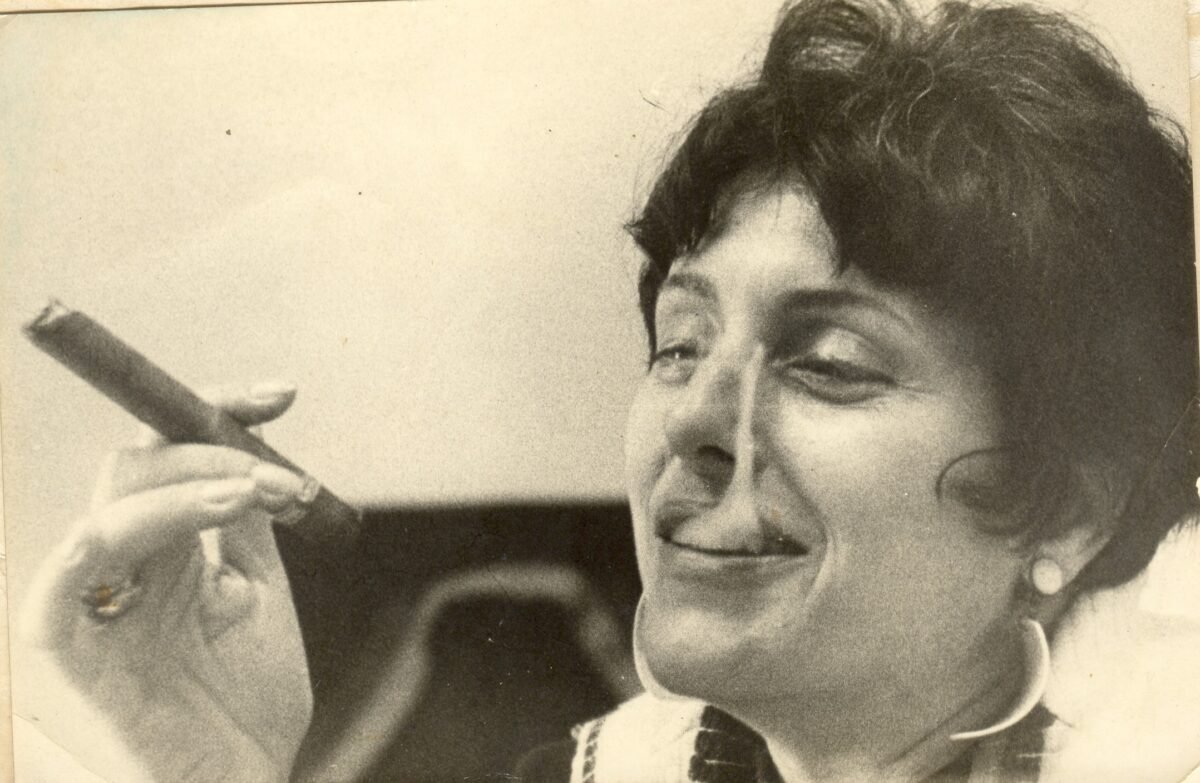
It is December 31, 1958. Natalia feels depressed, in a rented house. She is alone, or almost alone, because around her instead of grapes and happy relatives, she has guns, weapons of all kinds. Natalia Bolívar Aróstegui, the charismatic girl of the Havana aristocracy, barely has a peso and spends it on elementary food and a bottle of Bacardi Rum.
“I drank it at the top of the bottle”, she will say decades later, when she turns her gaze to the past and remembers herself sad, with her friends of the Revolutionary Directorate in the Escambray Mountain Range and she is waiting, waiting for an attack they were planning against Batista, waiting for a change. That night she hears persecutors passing by on 31st Street. The tyrant fell, and Alberto Mora, head of action and sabotage for the Directorate, warned her the next day. The Revolution triumphed.
It is difficult to imagine the life of ups and downs and vagaries of Natalia when they set foot in her home on Friday, September 13, 2019. A place of peace, where the breeze and clarity pour in, there are colorful sunflowers moving to the rhythm of the wind and a moving view of trees and red tiles. It is difficult. It is necessary, then, that Natalia arrives with her dress of flowers and her blue shoes, toad style, to count in a low but firm voice the summits and depressions where she has walked her existence.
– Let me see if I can open this – she apologizes – I drink a lot of water because I am diabetic – she says and clears her throat, after taking her favorite place in the room, a mahogany balance with blue lining.
– And the coffee? – he asks his daughter Natacha, with a somewhat tough look, dark clothes, the main help in writing her memoirs.
– They already gave me coffee – I clarify.
– She has, but I haven’t – claims Natalia. And the daughter blurs as quickly as she appears.
During her childhood, Natalia studied at an American school, the St. George School. The contrasts are there since that time. She speaks English in class, and then enters the domain of the Spanish language at home and feels the powerful influence of Isabel Cantero, Chicha, her black nanny.
Chicha’s mother, a slave of the Cantero de Trinidad, came to Natalia’s family as a gift to her medical grandfather. “My grandfather was not a slave and he took her in as part of the family. When she gave birth to Isabel, she was raised with great love”.
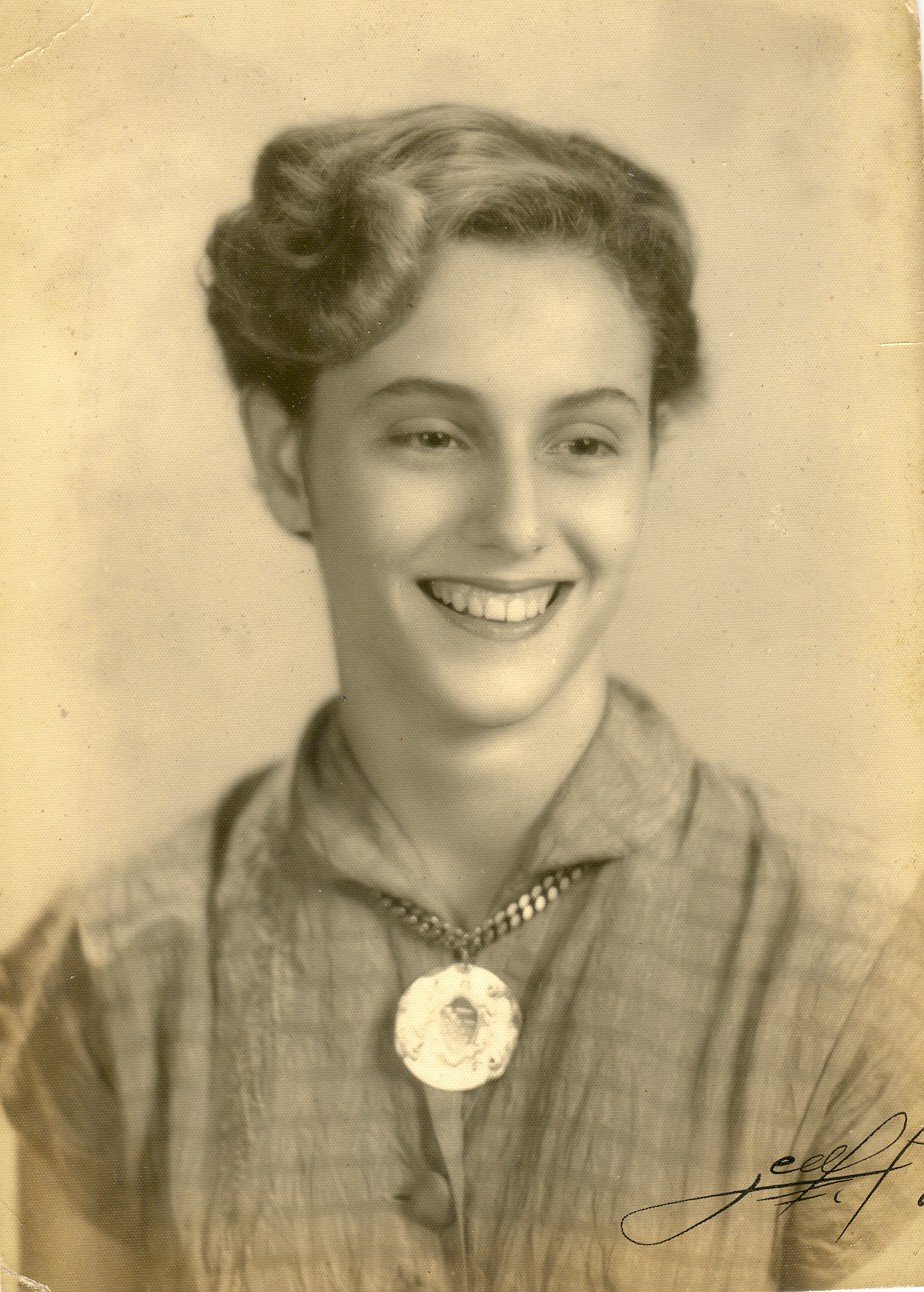
When the grandfather dies, Chicha moves in with Natalia’s mother and becomes her manager, takes the children to the park, takes care of them and pampers Natalia. They join. She is their main source of love, while her parents, María Teresa Aróstegui and Arturo Bolívar, who is related to the Liberator of America, play the strictest and toughest roles to form a disciplined girl, ready for work and adult life. Then Chicha becomes the nanny of his daughters Natasha and Bubby. In her old age, Chicha goes to live in Trinidad with her family. She survives the hundred years and leaves in Natalia the wisdom of the Afro-Cuban religions and culture.
– Miss Lidia, you have death behind you – says a Matanzas santero to a renowned ethnologist during one of his investigations. – With whom, with me?
– Not with you, with the one who comes behind – and points to the then very young Natalia Bolívar.
Natalia is a disciple of Lidia Cabrera. She meets her at the Palacio de Bellas Artes, where she arrives as a guide at the hands of Octavio Montoro, a relative who connects her to Martha Fernández and a group of women who planned the foundation of the palace. There he approaches the ethnology room and finds in Lidia another inspiration to continue studying the Afro-Cuban culture. She also discovers José Luis Wangüemert who marks her entry into the Revolutionary Directorate (and becomes an unforgettable love). To be found, she also finds an omen of death.
– Then there it sounded to me everything that was going to happen in two weeks. I was going to fall prey to death, to tell my family. Imagine, I forbade my family to talk to Lidia. And then he gave me Oggún’s necklace, which is very pretty, and he said: “When they come looking for you… because they are going to come looking for you, you hook this necklace that I give you, with Ochosi’s arrow that is for protection against the police and all the henchmen.
When you are apprehended, you hook the necklace under your blouse.
She is taken to the Bureau of Investigations, it is the 24837 dam. (“Play the ball and it comes out”). In the Laguito they show her the cement block where they were going to put her and throw her into the bay of Havana if she didn’t say all the security houses where, for example, Raúl Díaz Arguelles and Gustavo Machín were sheltering. She resists in silence.
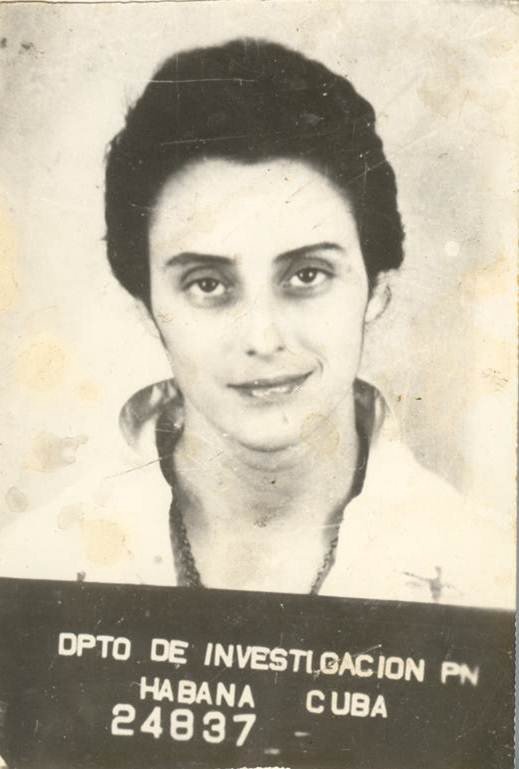
– They started hitting me and putting things in my ears. That’s why I’m deaf. My family is mobilized, but they call Julio Laurent, a guy who’s more of a killer than Ventura. I’m scared! This is already dying, I said to myself. I played a hot-cold game with him.
What do they call you?! They shout. She has several names. Rosa and the Witch, because of all the necklaces she was wearing. What’s your name?! They repeat I don’t know what your name is! They have caught you, they threaten you, because in her house they found papers, bonds that she kept for those who were leaving the country or going to the mountains.
What do you do with that necklace, you who are Catholic, Apostolic, Roman? Just then you understand everything. That was the godson of the old man who foresaw his capture, and the necklace was the same one that the killer had received when he became a saint. From there they start talking in Yoruba. A tense dialogue, which concludes when he says:
– What do you want?
– What do I want? That they look for my mom and bring me a sandwich with a chocolate serum – she answers that day with her mouth full of blood, and now, as an old woman, she smiles when she thinks about how close she came to death.
“I felt like eating something or taking something cold. My mother arrives, she is very nice and almost all the phrases were converted into French when she said that Laurent is the murderer. And I, shut up, don’t say that we don’t even go out at Easter”.
They let her out and she immediately goes to the Brazilian embassy. She only brings one piece of clothing. Then she is joined by her friend Raúl Díaz Arguelles.
Two weeks later she leaves the Brazilian embassy and goes into hiding. He never thinks about leaving his country. He rents houses. He hides his identity under other names. She is already on file with the entire police force. She does not give up, they attack the Fifteenth Police Station. She takes Raúl and Tabo Machín with Frank Arango to a small town near the Escambray. “He returned with Tabo’s cousin, the house he had left in Orfila was full of weapons. I had to take care of all that”. There she was surprised on January 1, 1959.
Natalia becomes silent. “I’m going to have to go to the bathroom,” she interrupts. As she leaves, she goes through her room: paintings on all the walls, little bird rattles that sound in a constant jingle. In my hands I discover a lock of white hair; it is Natalia’s and must have flown towards me in one of those breezes that cross her home.
A traitor to her social class, she is accused by her family when everyone follows the path of migration and she stays in her beloved Cuba. Despite the sadness of seeing her loved ones leave, despite feeling that the Board of Directors was being humiliated, she could not walk away.
“I took Fine Arts with the guns. I was the director for six years, I did the Napoleonic Museum there because Julio Lobo left me the entire Napoleon collection. Many of the collections are in the museum because they were left to me. Always with the lawyers of the owners and the lawyers of the museum, we made the minutes with a delivery, how shall we say, of indefinite loan. They would leave things to me to protect them. You know that in revolutions looting is common. That’s why they threw me out when I didn’t allow the sale of artworks.
– What year was that?
– It was in ’66. They threw me out and sent me to clean graves in the cemetery, but those are such nasty things… – and it leaves the idea in a fine thread that fades into thin air.
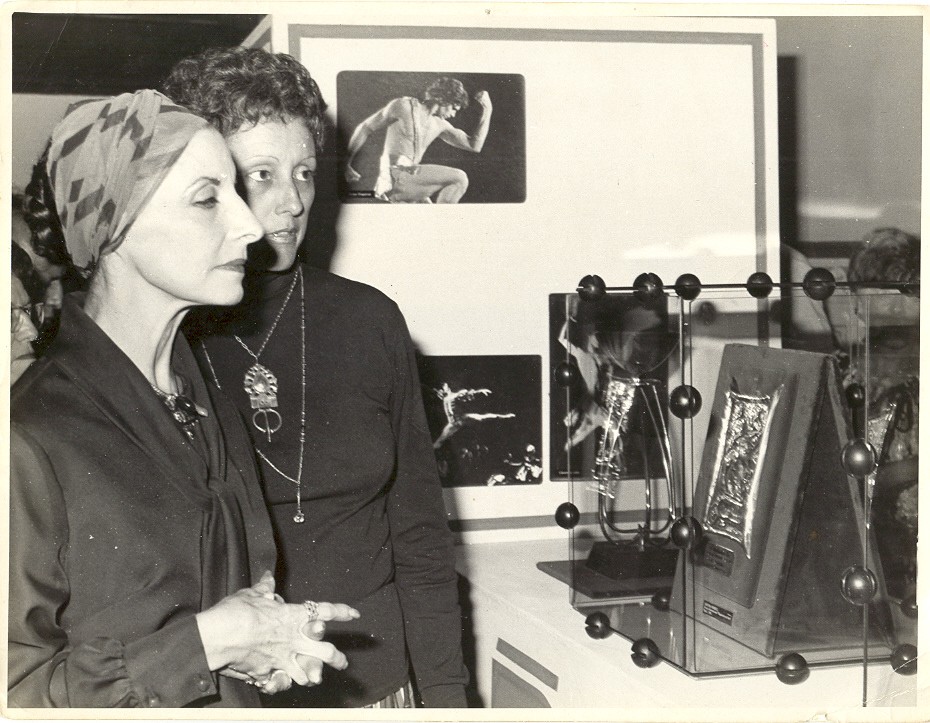
Alicia Alonso and Natalia Bolívar
“What did I go to, Natalia, after? They moved me right away. Do you know why? I was a character at that time. I knew all the writers and all the artists from before… I knew them all very well. I complained and after that they sent me on my way… Do you know what “on my way” is? With the iron things opening a hole in the rocks at the exit of the Havana tunnel, in Pastorita’s famous apartments. The already created National Council of Culture sends me to work with the iron rod to break the rock.
“My life is very complicated,” she repeats, evoking the guagüeros who used to collect money on the buses and, after eliminating that post, work with it. They are all abakuá. Moved by a Natalia, recently given birth, weak and very thin, they decide to help her. “Natalia, you stand here in the hole, take the iron, throw it there, you pretend you are opening and we open next to you”.
Her pilgrimage through the world of work remains just as eventful. She is an administrator of a blumber factory, an administrator who studied four months at the Louvre Museum and knows how to handle two languages, for example.
“That’s where they got me from. Where do they get you from, Bolivar? She lands, like a damaged UFO, in agriculture. First in supplies, then in agricultural plans and in the Nazarene command post, where she serves as a translator for the presidents who come from all over the world to see the Ten Million Dollar Sapphire.
“I had a good time because I was in an environment that was more cultured and interesting. Many presidents passed through there and with Fidel several times. Sometimes he was upset about something and he would get involved with who he was with, with the King of what I know, and I would say that I am not going to tell him. It was a lot of fun, really.
The laps continue after the failed harvest. From the duck, goose and chicken breeding plan to the jewelry store at the National Bank of Cuba and the Numismatic Museum, located in the oldest bank in Cuba. Upon arrival, everything is stained with dye. They clean the floor with iron-bristle brushes.
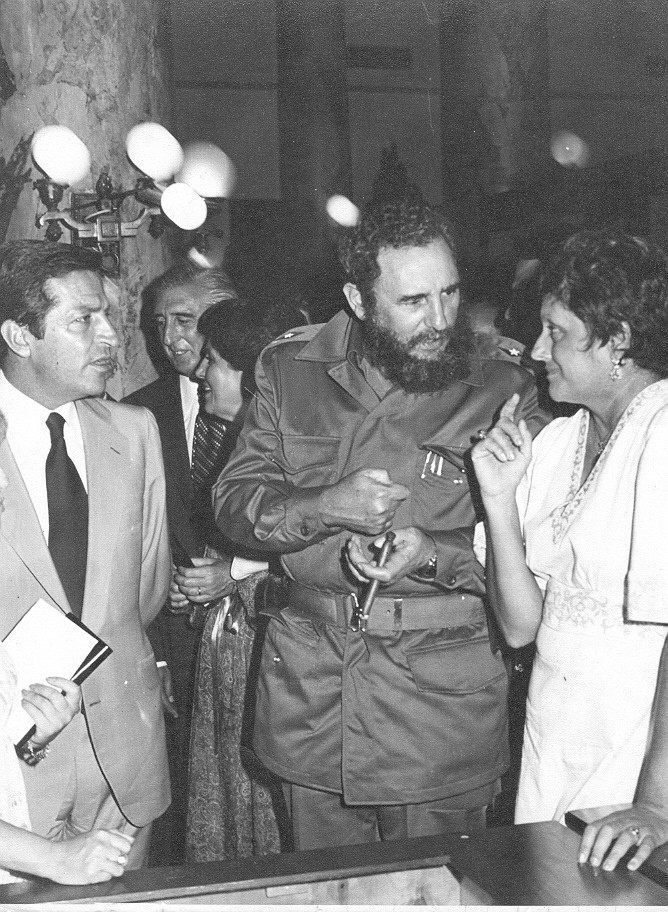
With Fidel Castro
The museum of a subject as arid as numismatics becomes a sensation among ambassadors and personalities of culture. Music, ceramics, painting converge there…
On one occasion, Adolfo Suarez, the first president of post-Franco Spain, visited with Fidel Castro. For Natalia this fact – Fidel talking all the time with her and Adolfo Suarez and not with the then Minister of the Bank – caused her to be fired from her job.
“That was in 78 or 79, they left me a year and a half without a salary and without being able to work with either Alicia Alonso or Sergio Vitier. One day I said I was going to kill the minister.
Her friend José Alberto “Pepín” Naranjo, worried, asked her why she was harassing the minister and she told him the truth.
“They sent me to say how much the state had to pay for the year I was out of work and out of money. I survived because my mother had money in the bank.
Not only did her impeccable work arouse suspicions. In a country of workers and peasants, she proudly defends her aristocratic ancestry. And to top it all off, she denies any political party “that forces me to do something I don’t want to do.
It’s the middle of the Special Period, in a restaurant in Old Havana, under the promise of a steak and a cold beer, she and a babalawo friend of hers are talking. The waitress interrupts, “lunch is ready”, she warns them.
– Hey, stay here – he keeps her.
Then a trucker arrives with a box of books. And silently, as if carrying the holy grail, he gives it to the bartender.
– Hand me that book, let me see it.
– No, you have nothing to do with it – the bartender spits.
– Hand it over!
– What do you want it for?
– Get it for me! Natalia, look…
– Hey, I have nothing to do with Marx, Lenin or Engels, so why should I open it?
– Open it – he says.
“It was The Orishas in Cuba, with a cover of complete works by as many communists as there may be. The guy was selling it for a hundred pesos, and a hundred pesos before that was a hundred pesos. I’m leaving like a wildcat, I’m eating the steak, of course, and I’m leaving for Uneac. Look at what you are doing. He gave them a changó. The choricera was formed, as one would say in good Cuban. They closed the printing press. The police got involved. And they had to present my book, and it was Cuba’s bestseller.
The book is the result of collaborations with filmmakers such as Titón, who sought advice for their films or plays. The book, which received the unconditional support of her psychiatrist friend Beatriz Begoña, was born five years late and in the midst of an unprecedented popular reception.
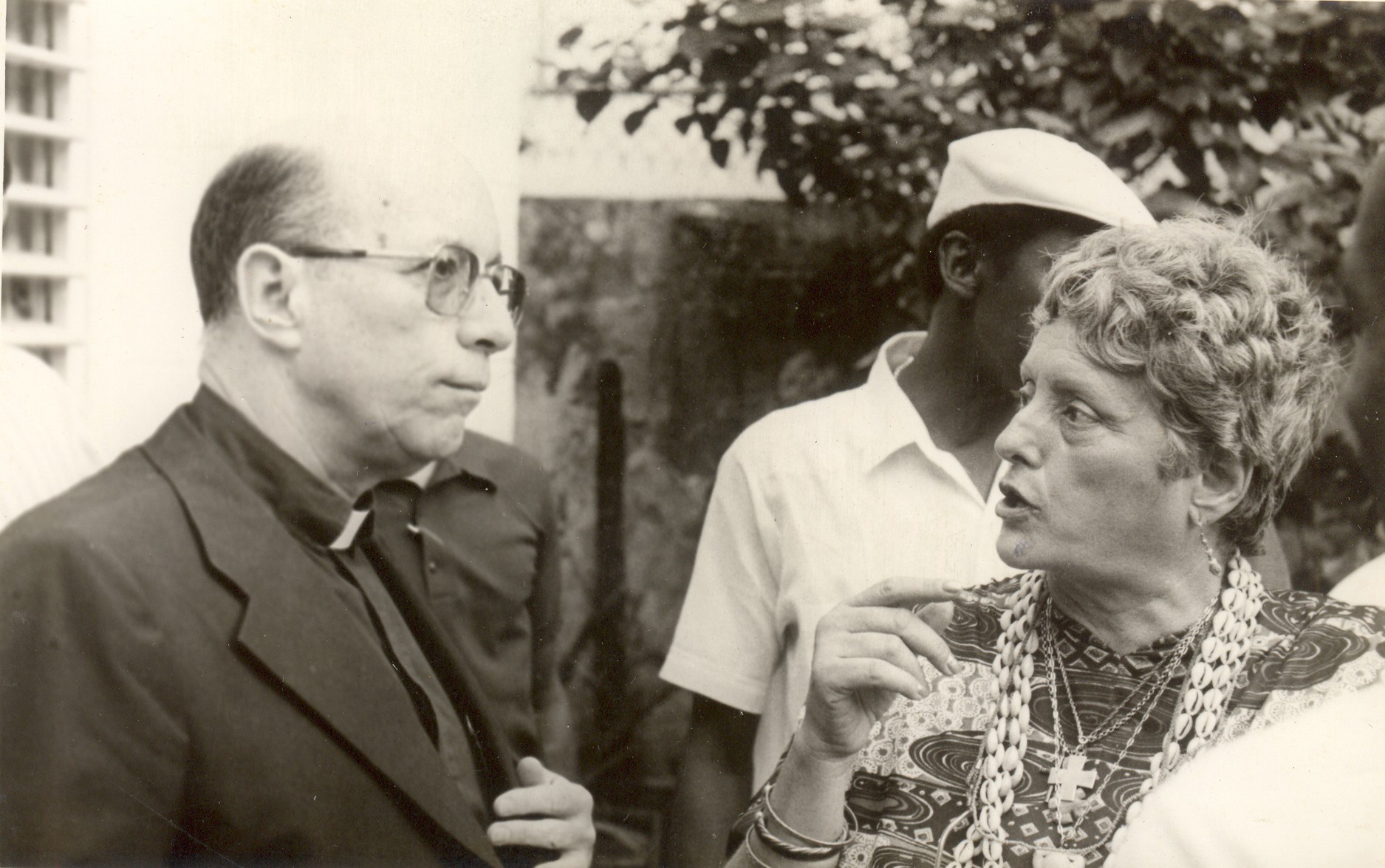
During the presentation of The Orishas in Cuba
“We did a coconut shoot, with all the people who had helped me make the book and who were already dead: my psychiatrist, Enrique Rodriguez Roche, Lidia Cabrera, people who were dead and I put a scribble with the names on top of them.
Scribbling, he says, is what Elegguá is put on a chair. The presentation-homage was accompanied by Arsenio Gutiérrez’s group, with drums and songs. She and Reynaldo González are in the garden of the Union of Writers and Artists of Cuba, surrounded by so many people that the Special Brigades are necessary. Days later such a scene is repeated in the Cuba Pavilion. A line of three days and nights. Some friends fear for their safety.
“Natalia, you have to find yourself a bodyguard so that you can go with him, since you are going to go alone, they are going to kill you, that’s full. And she who doesn’t, for the people there is no need for protection.
Next to the room there is a small studio, full of books, photos of Natalia, Natalia with her daughters, Natalia alone. Her daughter Natacha, who now brings a smile, is looking for her mother’s iconic photos. “At different times, she always likes to dress up. Even on birthdays, she still dresses up sometimes.
Working with Natalia is easy but very complex. Sometimes they do not agree because “we are from different generations”, admits Natacha while she checks, folder by folder, the moments of celebration, of trips, with Lidia, with Eusebio Leal.
“She is the lead singer, we are all together, but for now, everything is fine”.
They can have small discussions but always reach a consensus. Natalia is quite incisive when it comes to putting a period or a comma. They both learn.
“Listen to everyone. You learn from everyone, because even the least educated man teaches you something,” Natacha confesses. It is one of the teachings she sees in her mother and, above all, being a good friend. “Even if her friends are in the worst stage of their lives, she always stays by their side”.
And it is true. In the Elogio Oportuno, a space coordinated by Fernando Rodríguez Sosa, she signs the book La sabiduría de los oráculos (The Wisdom of the Oracles) with a little brother-in-law that says her name in Mandarin and draws a little Cuban flag on some of them.
“Natacha, give her the address and phone number,” Natalia orders if anyone asks for a contact or another opportunity to have her near. And then, in front of a pink and white cake – in celebration of her 85th birthday – she will remember again Lidia Cabrera, Fernando Ortiz and all her friends who opened the doors of being Cuban and knowing how to be Cuban. “Thank you for this. All my thanks to them”.
But no feeling is pure and happiness has nuances. This is a painful moment, as he confessed that Friday afternoon. “Seeing Havana, which is my Havana, how it has been destroyed. That has given me such great pain, destroying the great houses, the great stories of Cuban architecture”.
“And if someone dares to ask you why I haven’t left my country… I’ve traveled all over the world, but this is my country,” he stresses almost fiercely.
No one can take away Natalia’s Cuban identity. “I didn’t last more than a month outside my country. And if you ask her who Natalia Bolivar is, she will immediately say: “Cuban”. She needs nothing more than a root to her island deep in her chest.
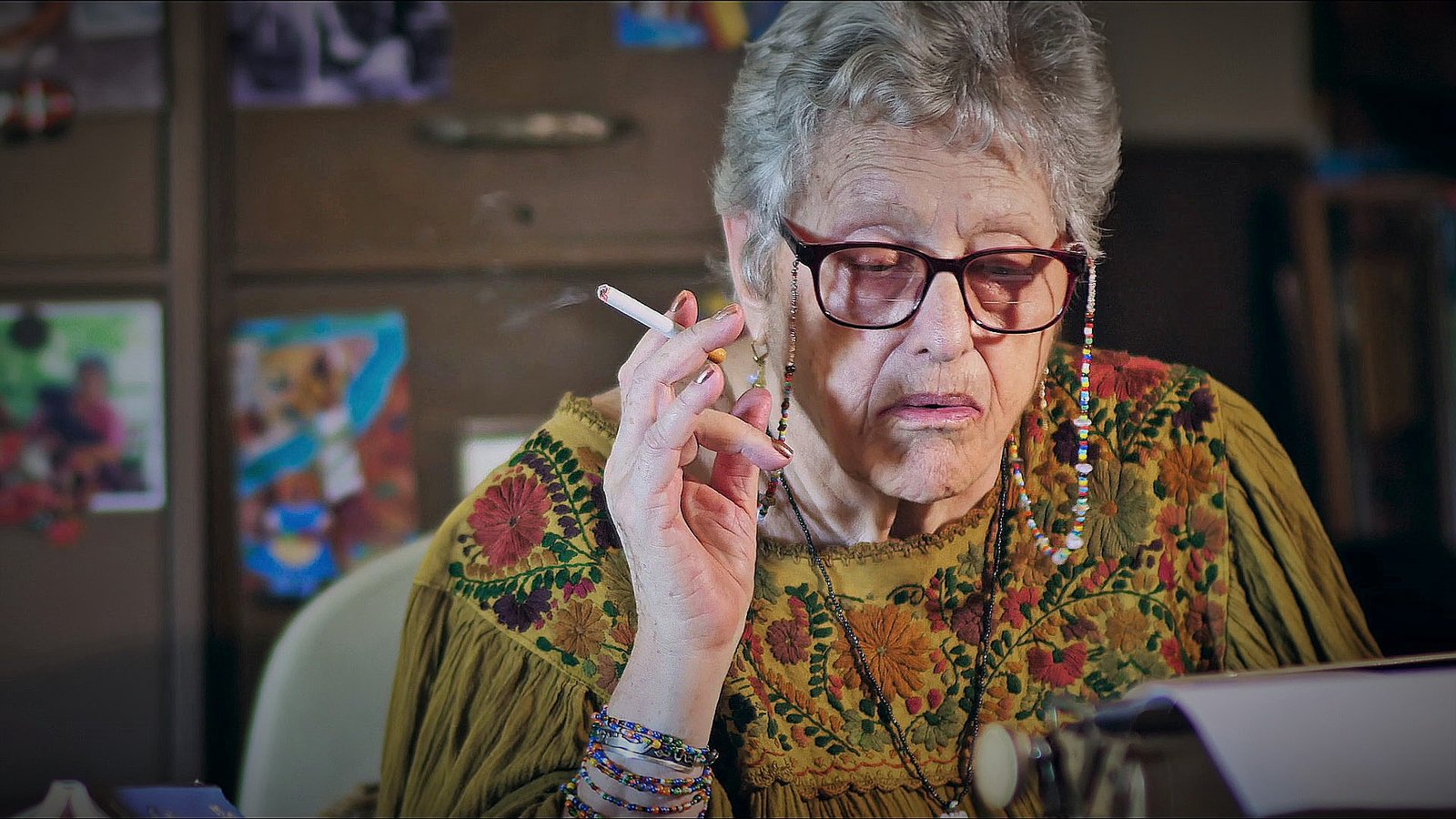
Heberferon versus skin cancer

Heberferon, Cuban alternative against skin cancer
February 4, 2021
Translated and edited by Walter Lippmann for CubaNews.
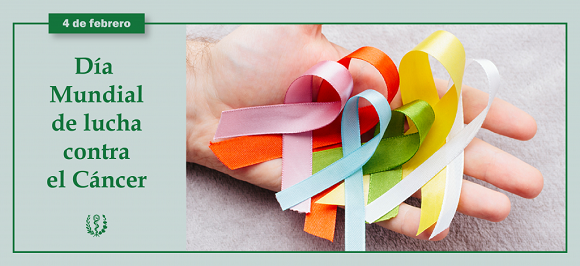
Photo: Minsap
Cuba joins the global community today in the commemoration of World Cancer Day, a disease that, according to the Pan American Health Organization, is the second leading cause of death in the Americas.
The Antillean nation’s contributions in the creation of drugs to treat this disease, which according to statistics cost the lives of 1.4 million people in 2020, while another four million were diagnosed, stand out.
One of the innovative Cuban drugs is HeberFERON, unique in the world, and also currently used in the action protocol against COVID-19 with very good results.
Doctor in Biological Sciences Irlado Bello Rivero, leader of this project at the Center for Genetic Engineering and Biotechnology (CIGB), commented to the Cuban News Agency on the history and evolution of this important product.
He pointed out that in 1957 Human Interferon Alpha 2b and in 1961 Human Interferon Gamma were discovered for their antiviral properties, but it was not until 1981 when they appeared in the nation.
When their antitumor effects were proven in in-vitro cancer systems, the alpha 2b variant was among the first to be used in the world against practically all tumors, since it inhibits cell growth.
The senior researcher said that Commander in Chief Fidel Castro Ruz was interested in this possibility of treating cancer and sent a group of experts to be trained on the subject and to deepen the technology for the development of interferons.
As a result, he explained, the Human Alpha Leukocyte Interferon, obtained for the first time in a natural way from white blood cells and leukocytes infected with a virus, began to be produced in the national territory.
He added that this formulation was also successfully used in the treatment of conjunctivitis and hemorrhagic dengue.
The Center for Biological Research was inaugurated, where this study was furthered; then the CIGB was created in 1986, and in the 90’s we were already producing Interferon alpha 2b and gamma interferon by recombinant means, he said.
Bello Rivero pointed out that clinical trials of the two products were carried out separately and they were registered in viral activities for almost any disease and type of cancer; their formulations also evolved and greater stability in the blood was achieved.
However, interferons did not have all the effects on cancer patients that were evidenced in vitro and other alternatives for the disease appeared, such as monoclonal antibodies and vaccines, he added.
The specialist commented that although this interest was waning in the world, in the archipelago there was a vast experience in their use and this was one of the few places where the two variants were produced.
Therefore, he continued, they were dedicated to combine them in a mixture, since it was known that together they generated a superior biological potency.
He emphasized that in 1998 they came up with these ideas and in 2005 they managed to define a new combination that allowed them to patent the product.
No one else has combined them in this way or managed to put them in the same bulb in a stable way, because they are very similar biologically but physically and chemically they are very different, he said.
He emphasized that they demonstrated the superiority of the new option over alpha and gamma interferons separately, through clinical trials in patients with basal cell carcinomas, the most frequent skin tumors with a high incidence worldwide.
The anti-tumor response was faster and more complete, he said, and this was also evident in advanced tumors that had not responded to previous treatments or surgery.
In 2008, the formulation was registered, not yet in its final version, which happened in 2016 already under the name HeberFERON for the treatment of basal cell skin cancer, especially in advanced patients and those at high risk of recurrence in the disease.
Bello Rivero reported that they began evaluating the drug in malignant brain tumors and in high-risk renal carcinomas after surgery, with very good results to date.
He specified that both studies are in Phase II, and the projections, when the COVID-19 pandemic allows it, are to register its use for these types of cancer.
According to the expert, HeberFERON has not yet crossed national borders, but the interest of other countries in the drug increases in the pandemic context.
Bello Rivero commented that it is remarkably effective in negativizing SARS-CoV-2 patients a few days after administering the first dose, even in those with viral persistence after 15 days.
He also pointed out that it influences the anti-inflammatory response, which contributes to reducing the number of patients seriously ill with the new coronavirus.
The website of the BioCubaFarma Business Group, to which the CIGB belongs, adds that the administration of this drug allows shortening the response windows against the viral infection without having to use lopinavir-ritonavir and chloroquine.
Researchers report that in the last decades, skin cancer has increased in the world. In Cuba some five thousand new cases are reported every year, with a tendency to increase, particularly basal cell carcinoma, although spinocellular carcinoma and melanoma are also present.
According to PAHO data, melanoma of the skin is among the most frequently diagnosed cancers among men.
The institution itself warned that if measures are not taken to prevent and control cancer, it is expected that the number of people who will be diagnosed will increase by 55 percent, which means approximately 6.23 million people by 2040 in the Americas region.
In addition, he emphasized that cancer patients have a higher risk of suffering from severe COVID-19, since they have a higher mortality rate due to an underlying condition.
In Cuba, attention to this health problem is a priority for the government and, consequently, for the sector’s authorities, with broad intersectoral and community participation, as well as comprehensive and integrated management between the different levels of care and sectors of society.
Recent information indicates that the use of HeberFERON has been extended throughout the country, with the opening of more sites for this purpose in the different municipalities.
Cuba’s Place in the New Cold War
Translated by Walter Lippmann for CubaNews. If you doubt the assertion that we are facing a new cold war, by carefully reading the main international media and specialized publications you will be able to verify that -from different points of view- in a growing number of cases, the interpretation and hypothesis of a new cold war seems to dominate the most varied interpretations at present. This seems irrefutable when examining the growing tensions and conflicts from Brussels to Moscow, from the Arctic to the Black Sea, from the Caucasus to the Middle East, throughout the length and breadth of South and East Asia, bordering the land and sea borders of China and its neighbors, and in all of them the direct presence and gravitation of the US, from NATO that today touches Russia’s borders to a renewed alliance -like the defunct NATO- that seeks to confront the countries of the region to the supposed Chinese threats. Where to and how How does tiny Cuba fit into this new context? We are a long way from the Missile Crisis or the Soviet submarine base in Cienfuegos… Does the Havana government seek to engage in any of these conflicts in alliance with Russia or China? Not even remotely! Havana’s close economic relations with Moscow -in frank decline for decades- and Beijing -with a worrisome decrease in the last ten years- have nothing to do with the geostrategic spaces mentioned above. There will be areas of political-diplomatic convergence in the international agenda (the presence of China and Russia as permanent members of the Security Council is an important capital for Cuba), but nothing that would serve to imagine or fabricate “conspiracy theories” that Cuba would respond to any of these orbits in any kind of aggressive truculence. The significant reduction of these economic relations ranges from large unresolved debts up to today and consequently a significant reduction in credits and various kinds of financing, in addition to significant cuts in the sphere of bilateral trade. A considerable list of projects agreed upon with both countries and in which Cuba placed great hopes have been shelved or put in the trash bin, from railroads to mining and oil exploitation, hotels and others. Except for very specific areas -such as biotechnology in China- it is difficult to identify today the completion of major projects by Russia and China in Cuba or any significant trade increases. Recent figures indicate that barely 10 of the 60 projects agreed with Russia will be implemented, while trade with China has been cut by 40%. Therefore the search for other investments, advanced technologies and trade links must prioritize the options that can be found in Western Europe, which is also where the bulk of Cuba’s foreign debt with the Paris Club rests. To a lesser extent, some Asian markets such as Japan (which in the early 1970s became Cuba’s second-largest trading partner) and South Korea (pending diplomatic recognition) may eventually offer some important opportunities. Paradoxically, a new space of reinsertion for Cuba is already the Arab World -not in its old relations of collaboration with Algeria, Palestine or Syria in some areas- and in particular with the monarchies of the Arabian Peninsula with which cooperation relations have increased as never before. This has not been and is not the case with the countries of Latin America and the Caribbean, with the exception of the fragile and changing relationship with Venezuela or a possible political turnaround in Brazil. Cuba is not in a position today to join areas of conflict, except in the case of Venezuela. Nothing that involves major links or confrontations in latitudes distant from Cuba. Cuba will continue to seek to consolidate and expand its active participation in the multilateral agenda and practices (and the legitimacy it offers) promoted by the UN. Cuba will continue to promote the possibilities offered by the cooperation and assistance programs offered by various countries with which it has normal relations, and which have helped it a great deal up to now. A similar approach will be reinforced in two hemispheric directions (CELAC, CARICOM and the Summit of the Americas), especially with those countries where the so-called “pink wave” facilitates relatively closer ties, although not at the commercial or direct investment levels, with the exception of Caracas and Brasilia. Another geostrategic space in which Cuba will have to explore in the near future are its very controversial possibilities is that of the U.S. with Biden -something that seems more improbable with each passing day- or with the administration that emerges victorious in 2024, This will depend on a prior dismantling of the economic war design applied by Trump and so far maintained by Biden and to lessen -but not suppress, a possibility that will remain for an unpredictable future- the sustained impact of the past embargo and the current economic war that will make possible in part a discrete improvement in the links between both economies. This will include the whole spectrum of collaboration and mutual trust derived from the agreements signed at the end of the Obama administration. Let me be a bit more specific: Some three months ago it was public info: 40% less trade (makes sense, among other reasons, some 800 million was connected to the tourist industry) with China. Besides, Cuba owes them a lot a money, a lot of arrears, plus growing concerns among Chinese businesspeople from additional sanctions by the Trump administration. Then add Chinese discontent (made public on several occasions) because of Cuba’s refusal to implement overall reforms (the Shenzhen road). Concerning Russia, we have that only 10 of the 60 projects agreed with Russia during Medvedev’s last visit might be implemented, including the monumental railway in Cuba (east-west, known as the Tren Central plus of the significant oil drilling projects, just one so far). Let no one argue now that this smacks of “claudication.” In other words, surrender under the worse possible terms. Cuba is not in the vicinity of Singapore or the China Seas, nor is it in Gibraltar or the Balkans. It is an integral part of the American hemisphere and we live 90 miles from the United States, where almost one million Cubans and their descendants are settled and growing every day. The simplest example is the cost of transportation from Chinese or Russian ports to U.S. ports in the Gulf of Mexico. This scenario may seem far away, but it is actively encouraged by many of Washington’s major allies (Canada, Mexico and the EU), who can, to some extent, contribute to some level of normalization. I repeat what I have argued on other occasions: Washington may well draw some positive lessons from the EU-Cuba Political Dialogue and Cooperation. This eventual partial normalization will inevitably include the Cuban-American population factor at three different levels: a. Remittances; b. An inter-family trade that will bring about a significant relief and promote levels of informal trade (inevitable in the current conditions); c. Attracting the first direct investment projects on the part of these Cuban-Americans with the due authorization of the United States. It is within these different spaces, conditions, limits, potentials and agendas, in which Havana will be able to reinsert itself in a scenario where the dominant cold war tendencies on the world scene weigh heavily on any decision-making process for any country scarce of resources, without an economy of scale or balanced economic relations of its external sector. Time and again Cuban leaders have insisted in recent years that they must learn from the costly and disastrous experiences of concentrating the largest and most sensitive part of their economic relations with a single country and this should set an important tone for their reinsertion. Important limitations to this reintegration Four limitations stand out for their importance in making this reintegration process more viable or not. They are as follows: The integral redesign of the provenly inoperative economic model is indispensable and cannot be postponed. All the official discourse in Cuba tries to present the current legislation on foreign investment, the model symbolized by the ZEDM and the Investment Portfolio designed for potential investors, as the best credentials to attract foreign investment that the official discourse now accepts as a strategic component of its development. The reality is that –in addition to the aforementioned economic war– current legislation is still perceived as very restrictive and incomplete, ZEDM is still far from producing what was expected and must -among other aspects- articulate an export project to the region and beyond that does not exist today. If the ZEDM aspires to follow “the path of Shenzhen” and the Investment Portfolio does not meet its objectives due to the same factors, it’s will be necessary in addition to the investment proposals that the Cuban authorities have rejected over the last 25 years for clinging to monopolizing and restrictive formulas. After the successful renegotiation of its foreign debt and the satisfactory start of its payments, Havana has entered a new process of non-payments and subsequent increased interest and penalties and thus an almost total loss of its credit possibilities. This places the Cuban authorities in an extremely precarious situation from the point of view of its international finances. It is more than evident to highlight its crisis in this regard. Last but not least, Cuba persists in its obstinate rejection of any level of collaboration, association or membership with respect to the international financial system (International Monetary Fund, World Bank and, on a regional scale with the IDB). All this is tantamount to reinforcing and prolonging its singular condition of “financial pariah” in the real world. The sum of these factors places Cuba in an enormously disadvantageous and prejudicial situation, in an extreme degree of vulnerability, to face and achieve an effective international reinsertion in the complex framework of a new cold war.
Si duda de la afirmación de que nos enfrentamos a una nueva guerra fria, con proponerse un lectura cuidadosa de los principales medios internacionales y de publicaciones especializadas podrá comprobar que -desde diferentes ópticas- en un creciente número de casos, la interpretación e hipótesis de una nueva guerra fria parece dominar en la actualidad las más variadas interpretaciones. Esto parece irrefutable al examinarse las crecientes tensiones y conflictos que van desde Bruselas a Moscú, del Artico hasta el Mar Negro, desde el Cáucaso hasta el Medio Oriente, a lo largo y ancho de Asia Meridional y Oriental, bordeando las fronteras terrestres y marítimas de China y sus vecinos, y en todos ellos la presencia y gravitación directa de EEUU, desde la OTAN que hoy toca a las fronteras de Rusia hasta una renovada alianza -al estilo de la fenecida OTASO- que busca enfrentar los países de la región a las supuestas amenazas chinas. Hacia dónde y cómo ¿Cómo encaja la minúscula Cuba en todo este nuevo contexto? Muy lejos estamos de la Crisis de los Cohetes o la base de submarinos soviéticos en Cienfuegos…¿Busca acaso el gobierno de La Habana comprometerse en algunos de esos conflictos en alianza con Rusia o China? Ni remotamente! Los esquemas de estrechas relaciones económicas de La Habana con Moscú -en franca declinación desde hace décadas- y Beijing -con una preocupante disminución desde los últimos diez años- nada tienen que ver con las espacios geoestratégicos mencionados más arriba. Habrán áreas de convergencia politico-diplomática en la agenda internacional (la presencia e China y Rusia como miembros permanentes del Consejode Seguridad es un importante capital para Cuba), pero nada que sirva para imaginar o fabricar “teorías conspirativas” de que Cuba responda a ninguna de estas órbitas en ningún tipo de truculencia agresiva. La sensible reducción de esas relaciones económicas abarca desde grandes deudas no resueltas hasta hoy y consecuentemente una sensible reducción en materia de créditos y financiamientos diversos, además de notables recortes en la esfera del comercio bilateral. Una considerable lista de proyectos acordados con ambos países y en los que Cuba cifraba grandes esperanzas han ido quedando engavetados o en el cesto de basura, desde ferrocarriles hasta explotaciones mineras y petroleras, hotelería y otros. Salvo áreas muy específicas -como la biotecnología en China- es difícil identificar hoy la materialización de grandes proyectos por parte de Rusia y China en Cuba o incrementos comerciales de alguna importancia. Cifras recientes indican que apenas 10 de los 60 proyectos acordados con Rusia serán ejecutados, en tanto que el comercio con China se ha recortado en un 40%. De aquí se desprende que la búsqueda de otras inversiones, tecnologías avanzadas y nexos comerciales, tengan que priorizar las opciones que pueden encontrarse en Europa Occidental y donde descansa, además, el grueso de la deuda externa de Cuba con el Club de París. En medida menor, algunos mercados asiáticos como Japón (país que a inicios de 1970 llegó a ser el segundo socio comercial de Cuba) y Corea del Sur (pendiente de un reconcimiento diplomático) pueden ofrecer eventualmente algunas oportunidades de importancia. Paradójicamente, un novedoso espacio de reinserción para Cuba lo es ya el Mundo Arabe -no en sus Viejas relaciones de colaboración con Argelia, Palestina o Siria en algunas áreas- y en particular con las monarquías de la peninsula arábiga con las que las relaciones de cooperación se han incrementado como nunca antes. No ha sido ni es así el caso de los países de América Latina y el Caribe, a excepción de la frágil y cambiante relación con Venezuela o un posible giro político en Brasil. Cuba no está en condiciones hoy de sumarse a espacios de conflicto, si exceptuamos el caso de Venezuela. Nada que involucre vinculaciones o confrontaciones de mayor envergadura en latitudes distantes de Cuba. Cuba continuará procurando consolidar y ampliar su activa participación en la agenda y prácticas multilaterales (y la legitimidad que ésta le ofrece) que promueve la ONU; continuará fomentado las posibilidades que ofrecen los programas de cooperación y asistencia que ofrecen diversos países con los cuales tiene relaciones normales, y que bastante le ayudan hasta hoy. Una aproximación similar reforzará en dos direcciones hemisféricas (CELA, CARICOM y Cumbre de las Américas), en especial con los países donde la llamada “oleada rosada” facilita nexos relativamente más estrechos, aunque no en los planos comerciales o de inversión directa, con excepción de Caracas y Brasilia. Otro espacio geoestratégico en el que Cuba tendrá que explorar en el futuro cercano son sus muy controversiales posibilidades es el de EEUU con Biden -cosa que cada dia que pasa se presenta más improbable- o con la administración que salga vencedora en el 2024, condicionado esto a un desmantelamiento previo del diseño de guerra económica aplicado por Trump y hasta ahora mantenido por Biden y aminorar -no suprimir, posibilidad ésta que quedará para un futuro impredecible- el sostenido impacto del pasado embargo y de la actual guerra económica que posibilite en parte una discrete mejoría de los nexos entre ambas economías. Esto incluirá todo el espectro de colaboración y confianza mutua derivados de los acuerdos suscritos al final de la administración Obama. Nadie venga a argumentar ahora que esto tiene sabor a “claudicación.” Cuba no está en las proximidades de Singapur o en los mares de China, tampoco en Gibraltar o los Balcanes. Forma parte integral del hemisferio americano y habitamos a 90 millas de EEUU, donde se encuentra radicado casi un millón de cubanos, sus descendientes y aumentando cada dia más. El más simple ejemplo lo constituyen los costos de transportación desde los puertos chinos o rusos a los de EEUU en el Golfo de México. Podrá parecer bien lejos este escenario, pero el mismo se ve activamente propiciado por muchos de los principales aliados de Washington (Canadá, México y la UE), que en alguna medida, pueden contribuir a algún nivel de normalización. Repito lo que he argumentado en otras ocasiones: Bien pudiera Washington extraer algunas experiencias positivas del Diálogo Político y de Cooperación entre la Unión Europea y Cuba. Esta eventual normalización parcial incluirá, inevitablemente, el factor de la población cubano-americana en tres planos diferentes: a. Remesas; b. Un comercio interfamiliar que propicie un alivio signficativo y promueva niveles de comercio informal (inevitable en las acondiciones actuales); c. Atraer los primeros proyectos de inversión directa de parte de esos cubano-americanos con la debida autorización de EEUU. Es en estos espacios, condiciones, límites, potencialidades y agendas diferentes, en los cuales podrá el Gobierno de La Habana reinsertarse ante un escenario donde las tendencias dominantes de guerra fria en la escena mundial gravitan considerablemente en cualquier proceso de toma de decisiones para cualquier país escaso de recursos, sin una economía de escala ni relaciones económicas balanceadas de su sector externo. Una y otra vez los dirigentes cubanos han insistido en años recientes que han de aprender de las costosas y desastrosas experiencias de concentrar la mayor y más sensible parte de sus relaciones económicas con un solo país y esto deberá trazar una pauta importante en su reinserción. Limitantes importantes en esta resinserción Cuatro limitantes sobresalen por su importancia en hacer más viable o no este proceso de reinserción. Son ellas: La suma de estos factores colocan a Cuba en una situación enormemente desventajosa y prejudicial, en un grado extremo de vulnerabilidad, para hacer frente y alacanzar una efectiva reinserción internacional en el complejo marco de una nueva guerra fria.
Cuba’s Place in the New Cold War
 By Domingo Amuchastegui (4/27/2021)
By Domingo Amuchastegui (4/27/2021)REINSERCION INTERNACIONAL DE CUBA ANTE UNA NUEVA GUERRA FRIA
 Por Domingo Amuchastegui (4/27/2021)
Por Domingo Amuchastegui (4/27/2021)
Subscribe to Blog via Email
| M | T | W | T | F | S | S |
|---|---|---|---|---|---|---|
| 1 | 2 | 3 | 4 | 5 | 6 | 7 |
| 8 | 9 | 10 | 11 | 12 | 13 | 14 |
| 15 | 16 | 17 | 18 | 19 | 20 | 21 |
| 22 | 23 | 24 | 25 | 26 | 27 | 28 |
| 29 | 30 | 31 | ||||



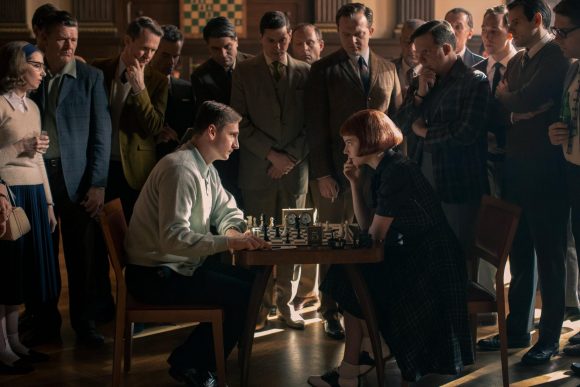
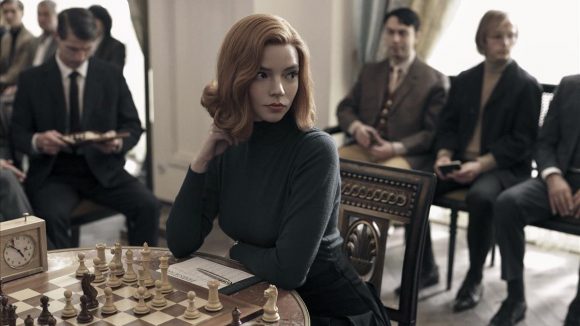
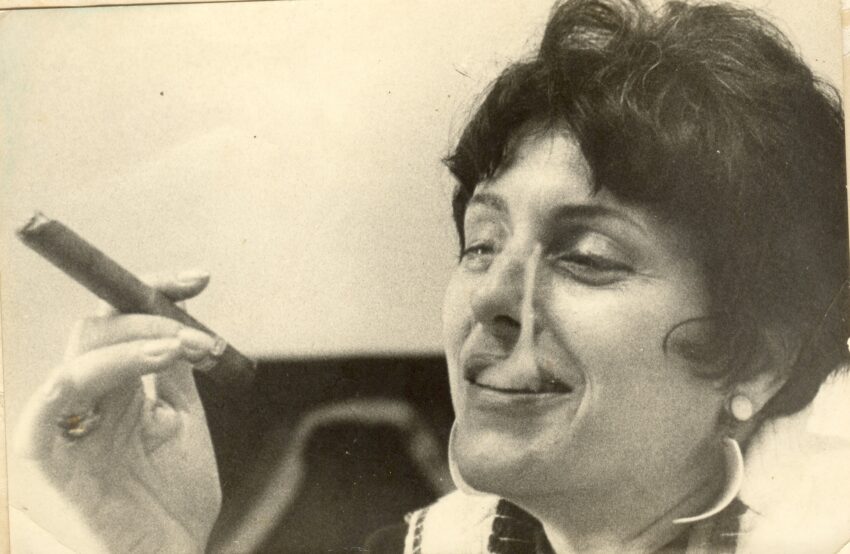
You must be logged in to post a comment.